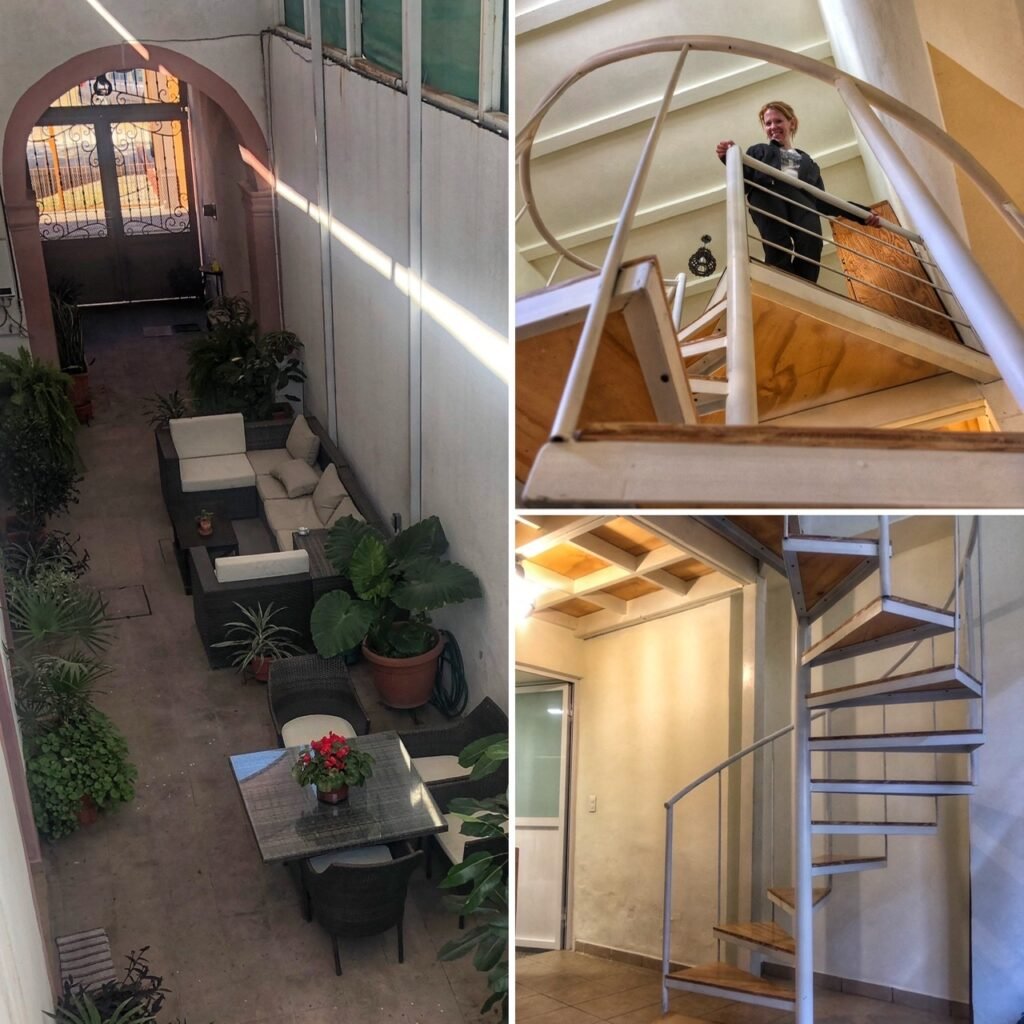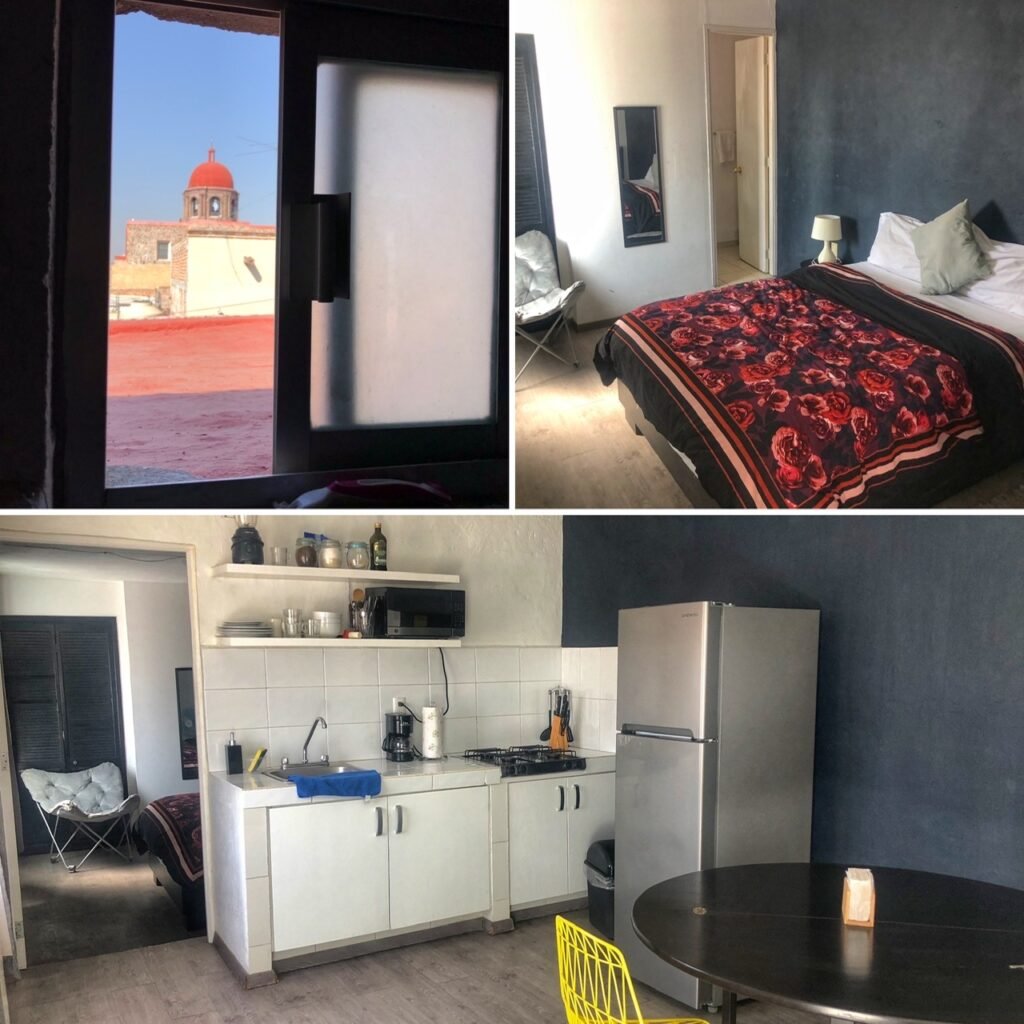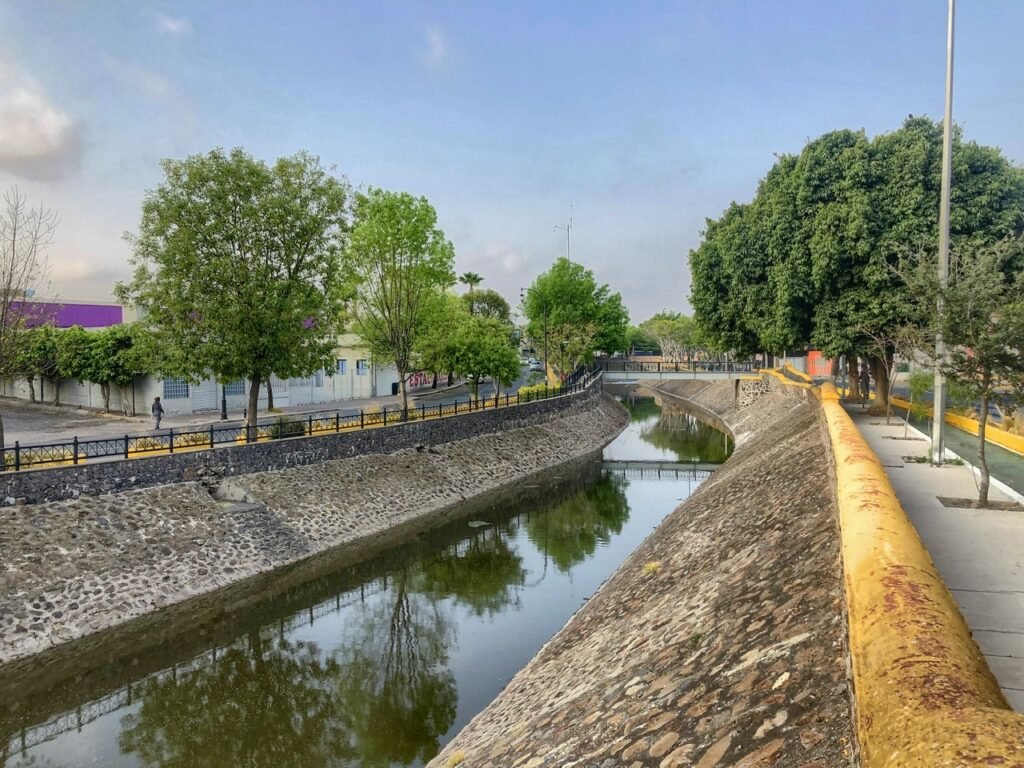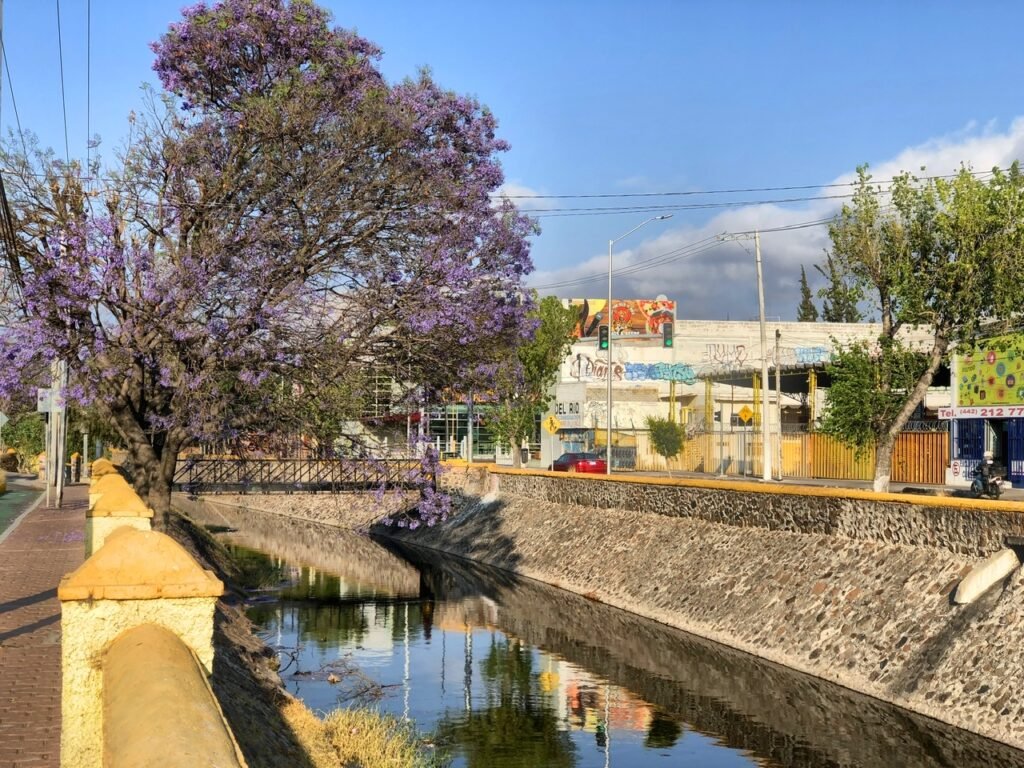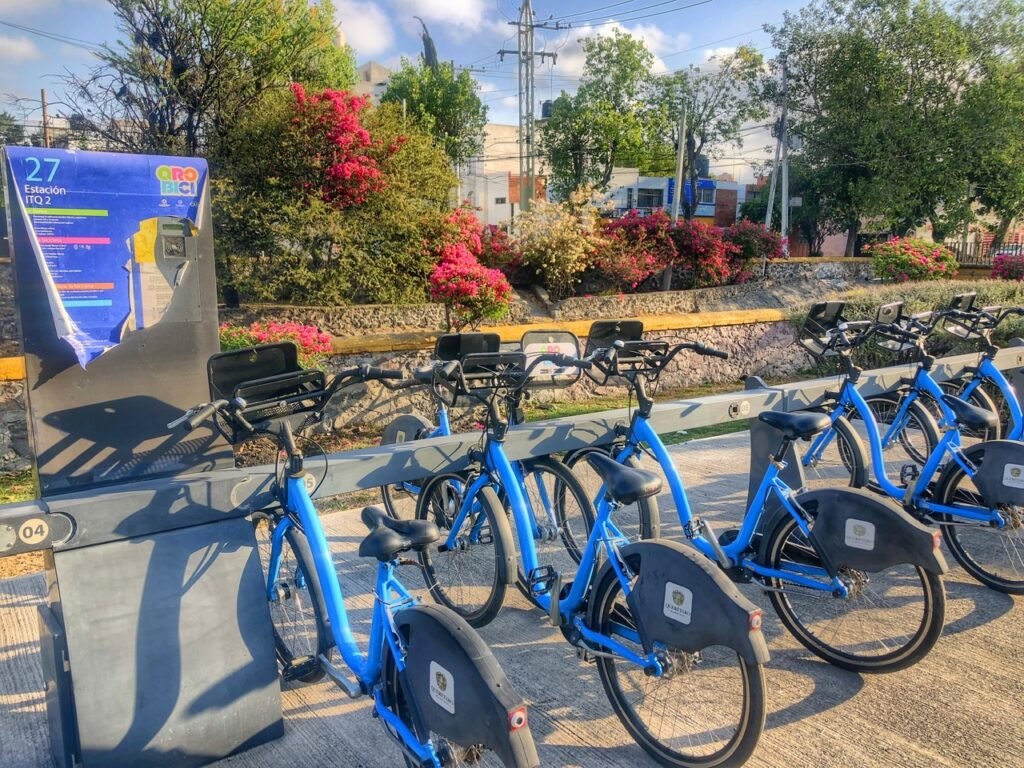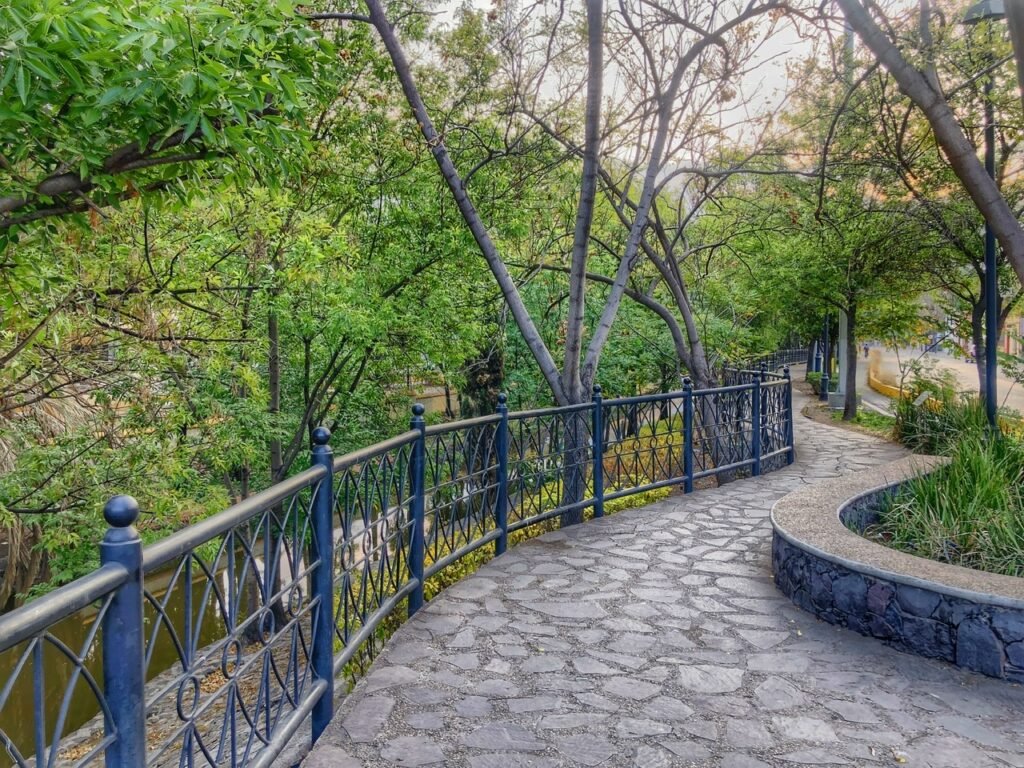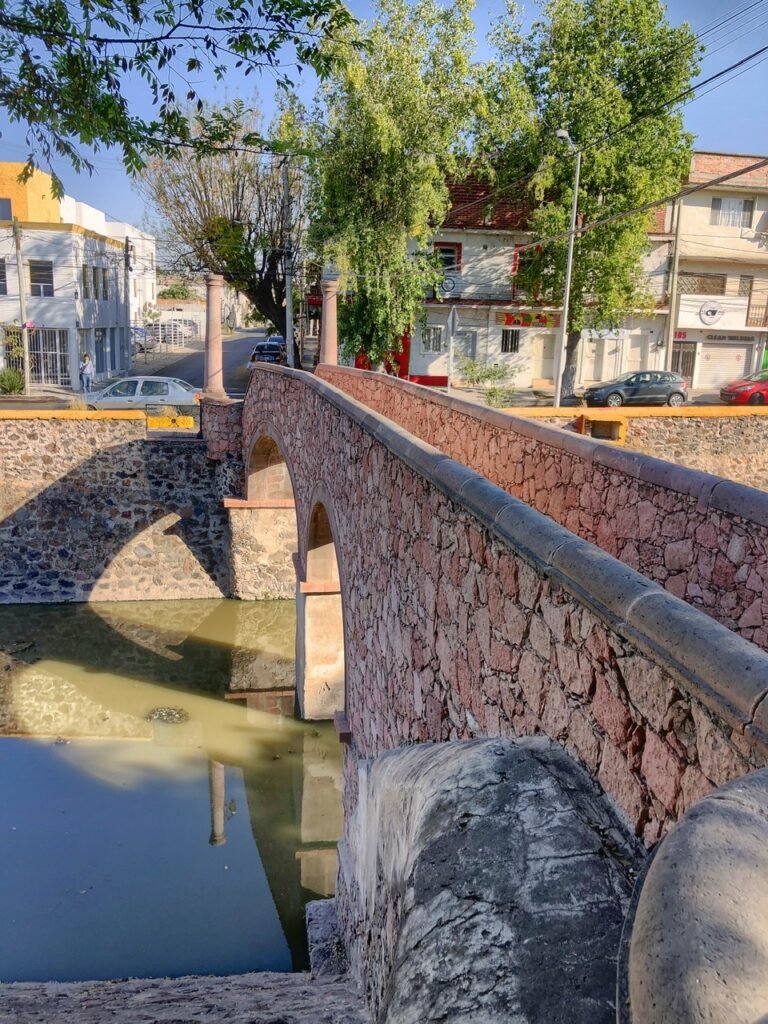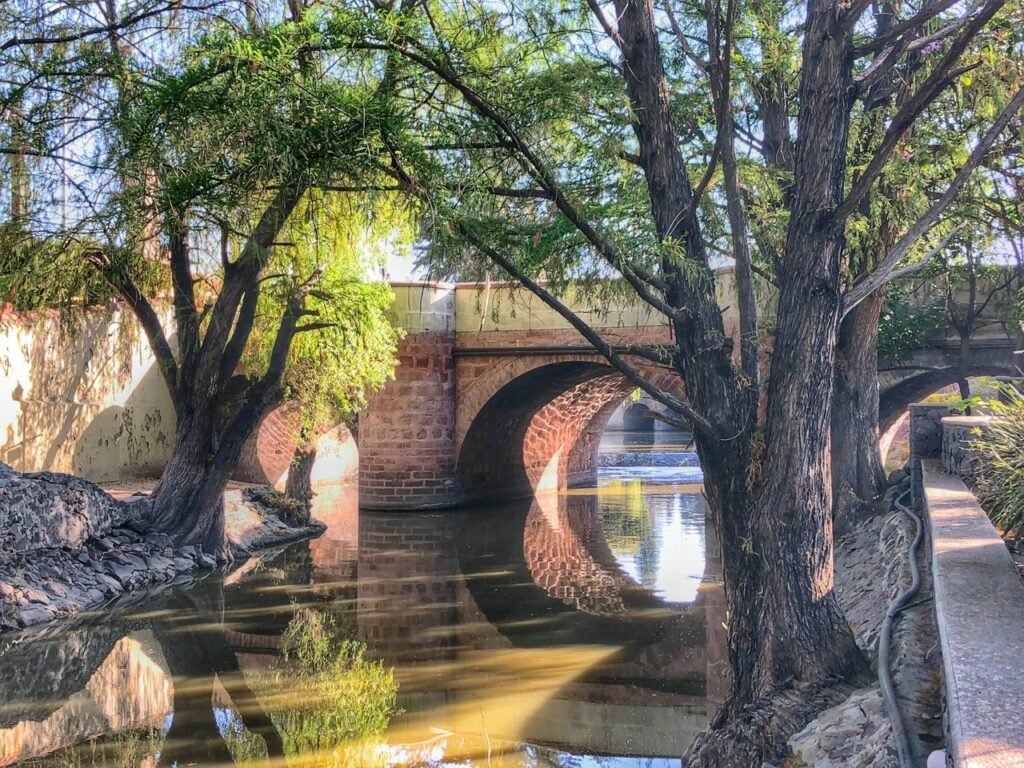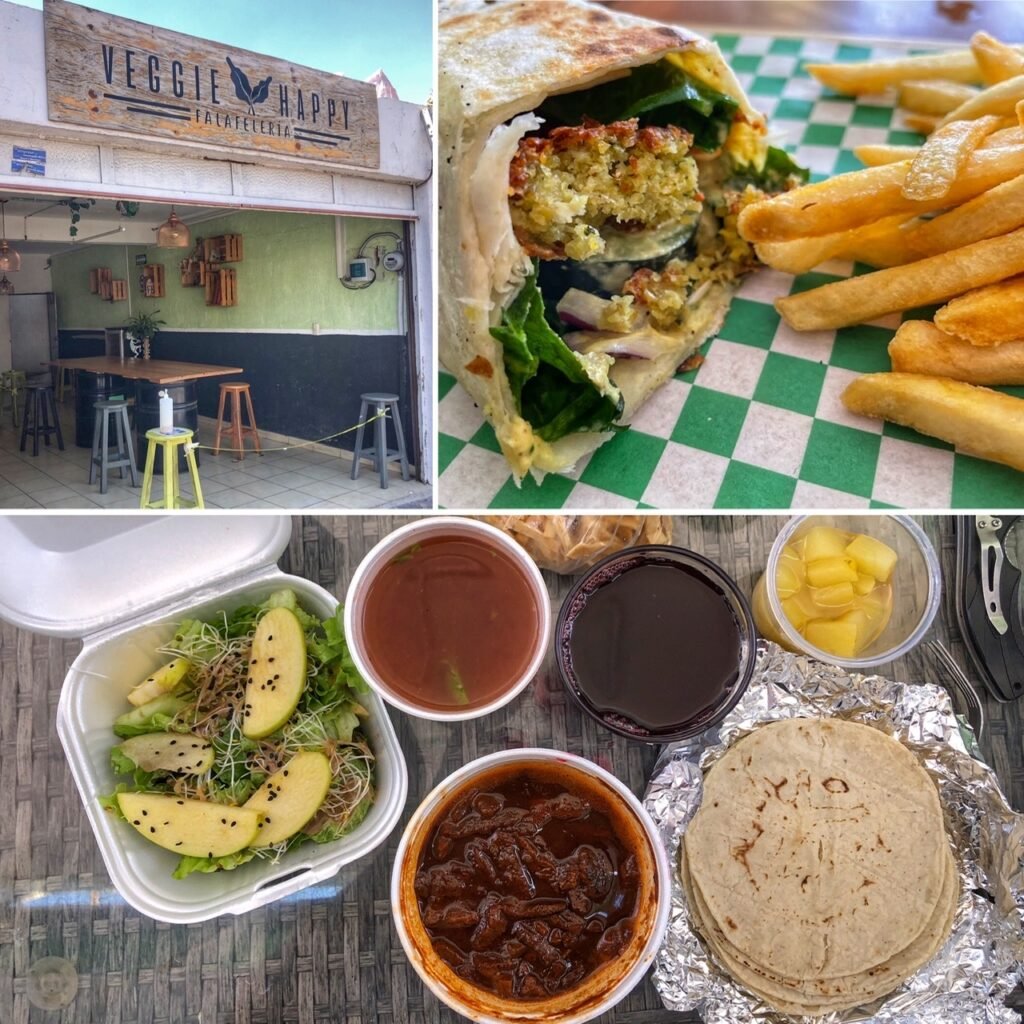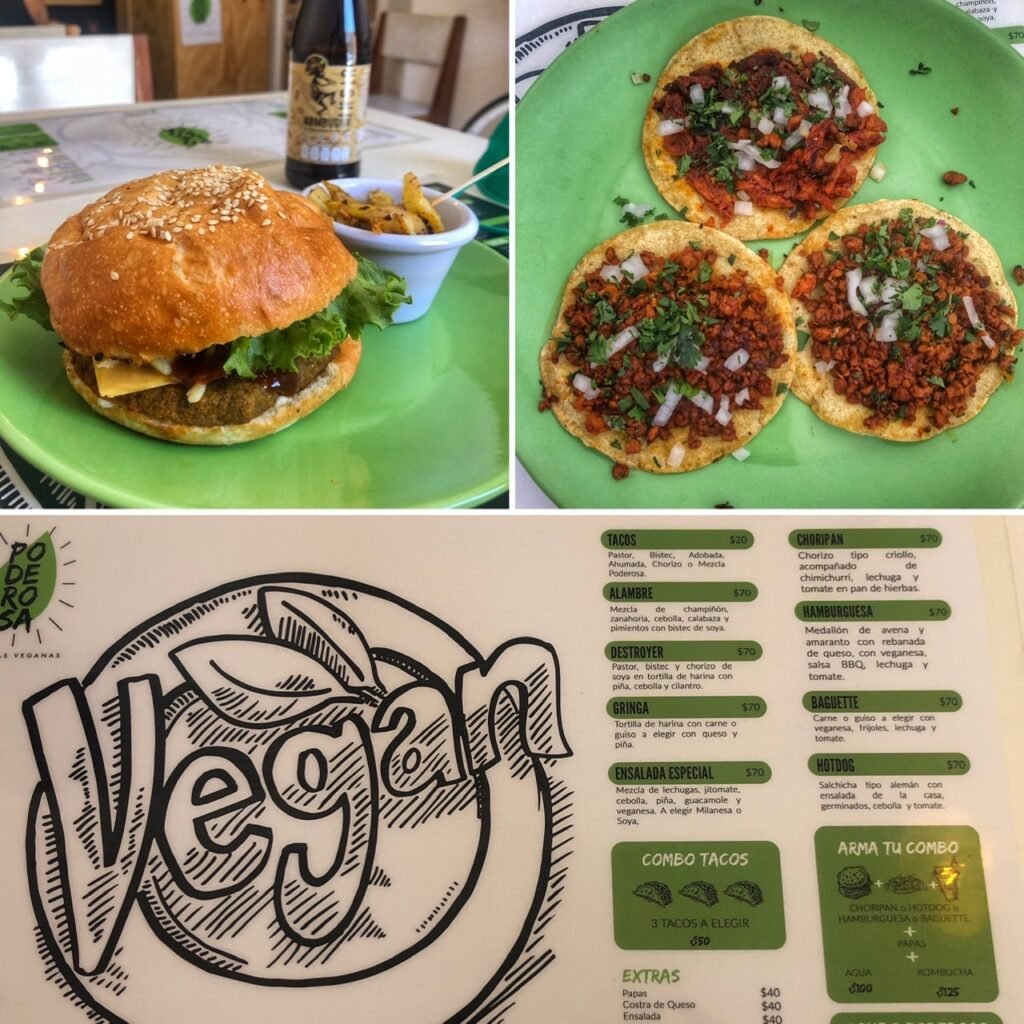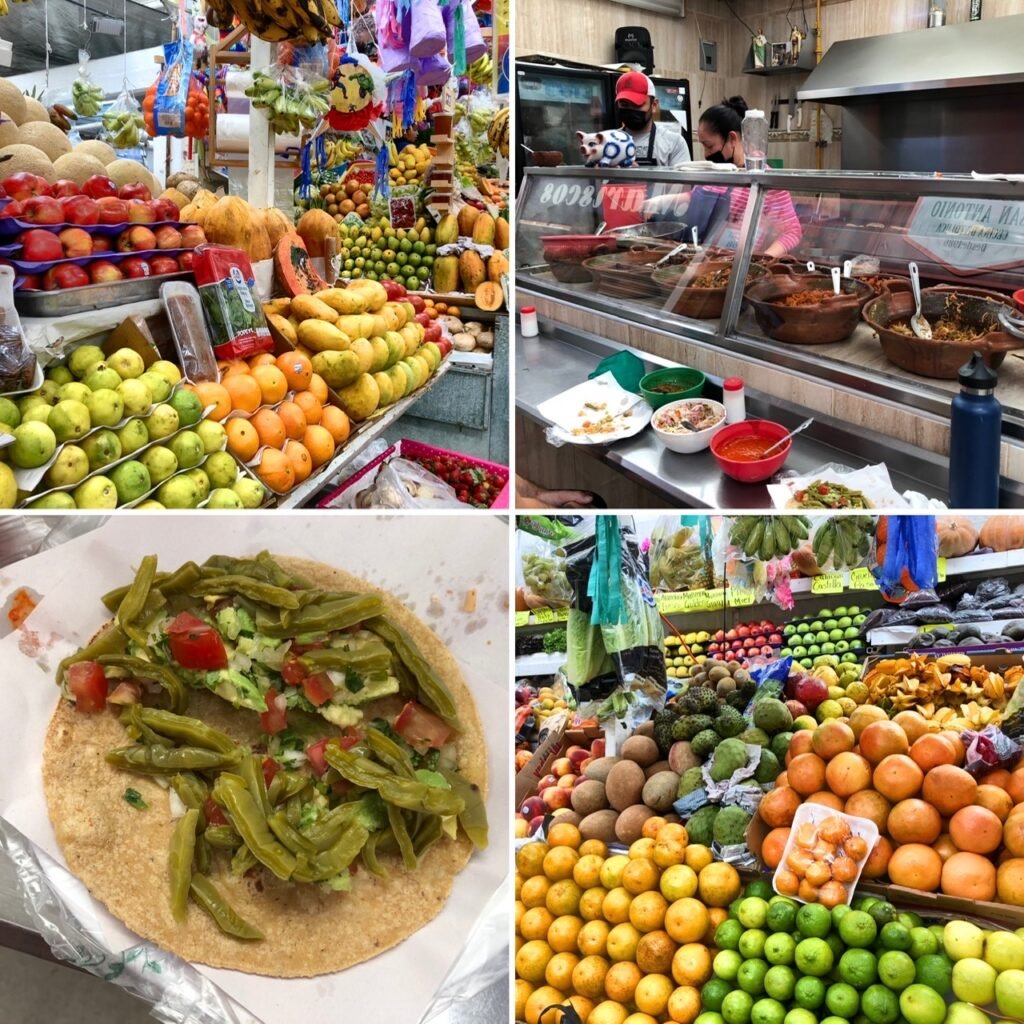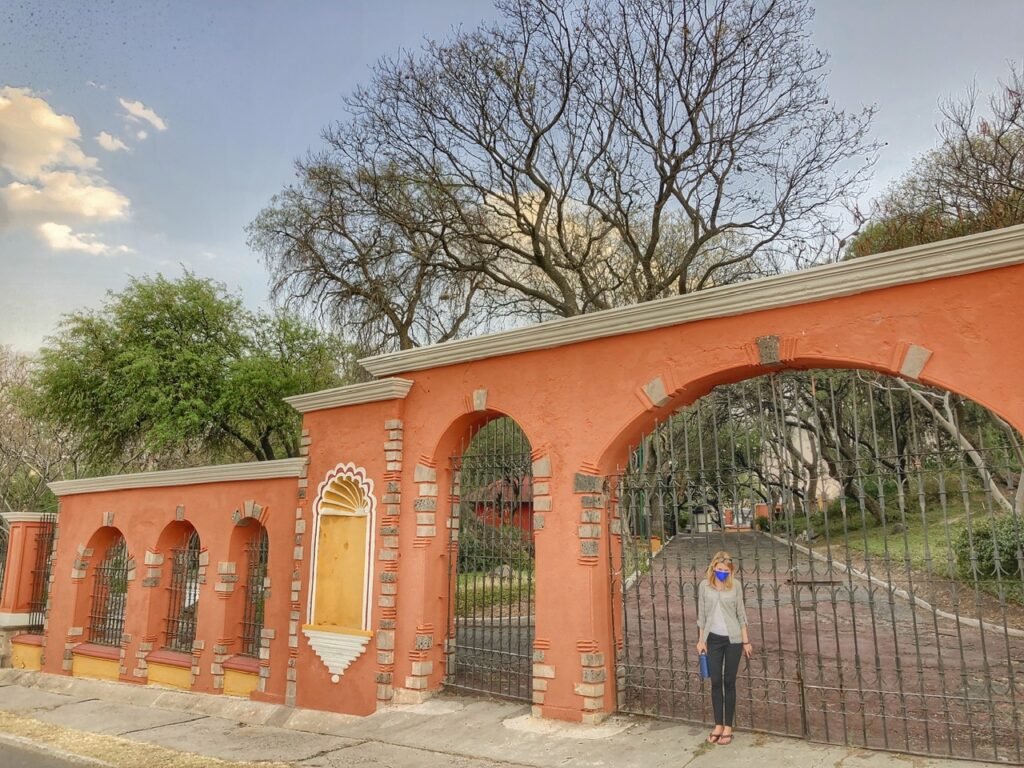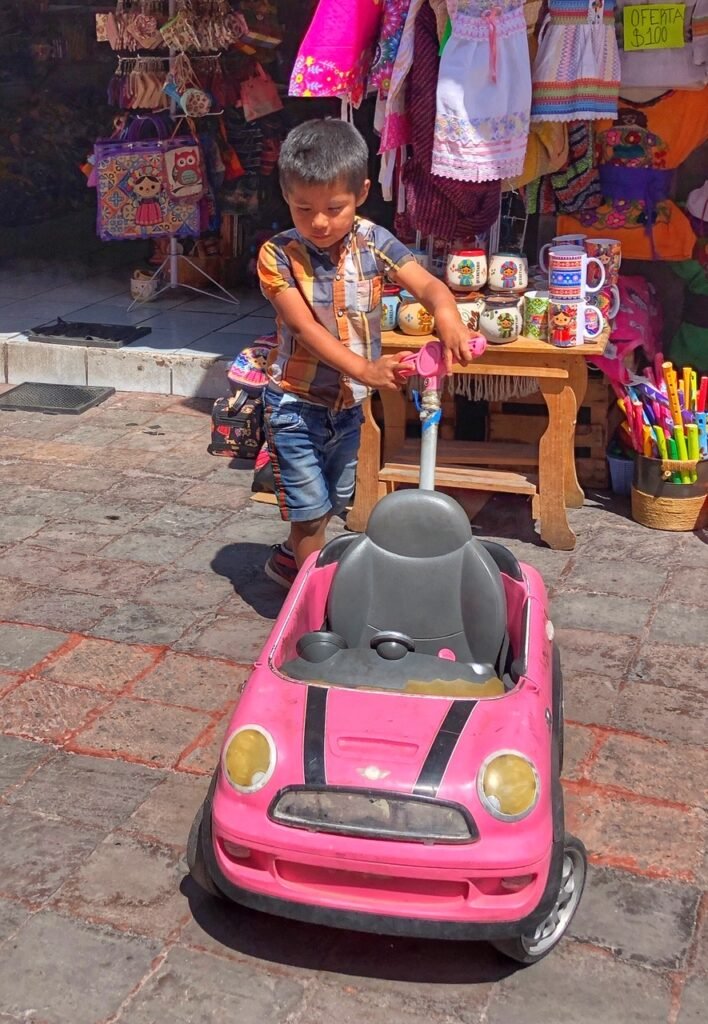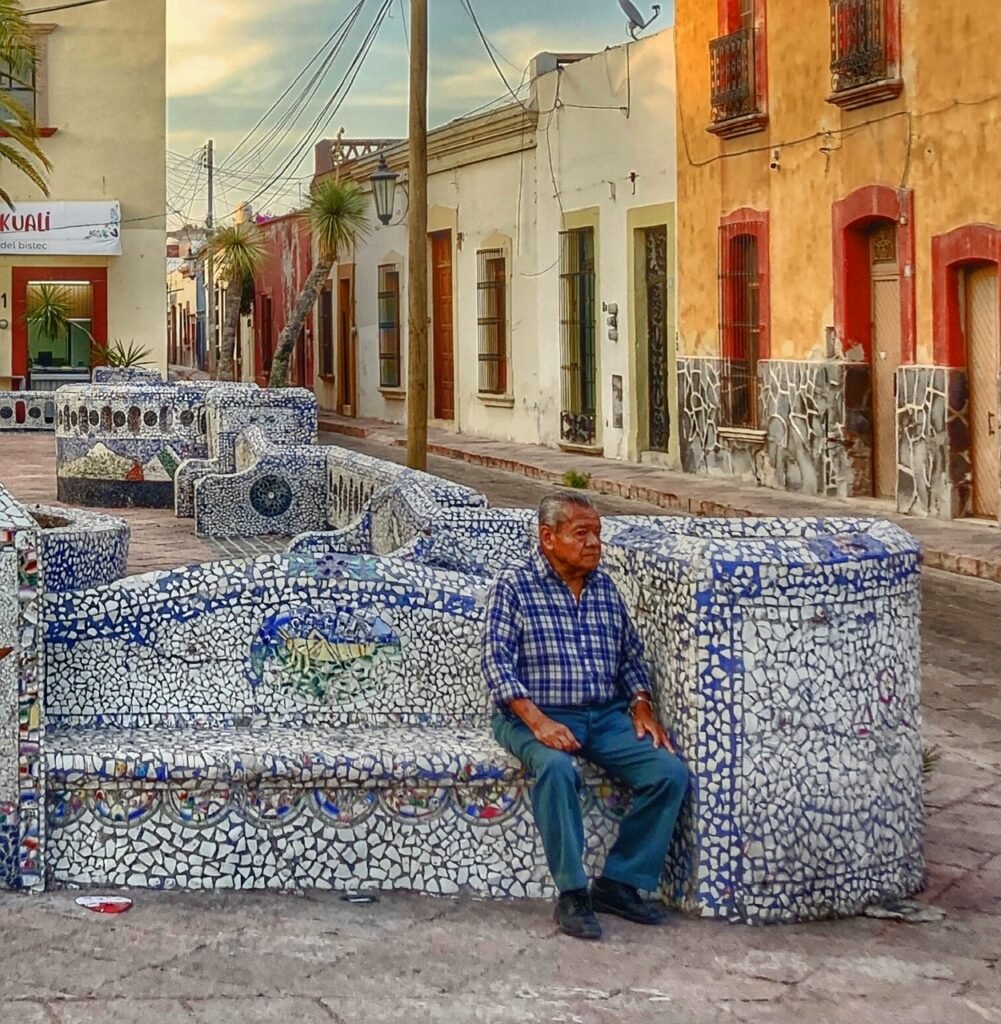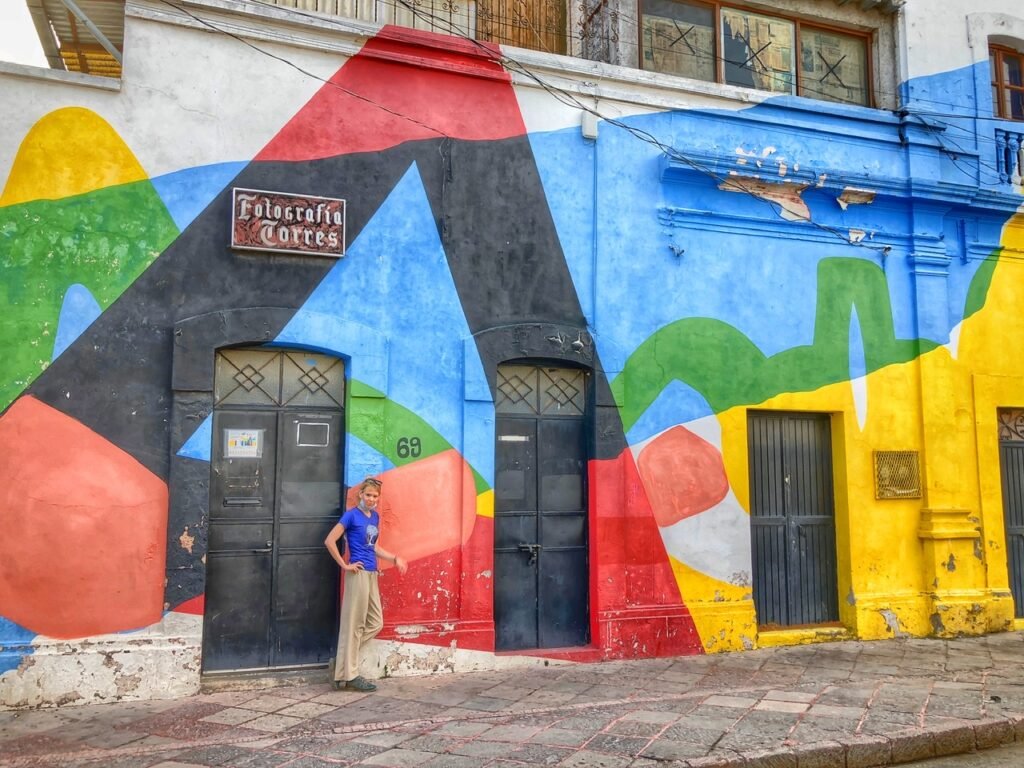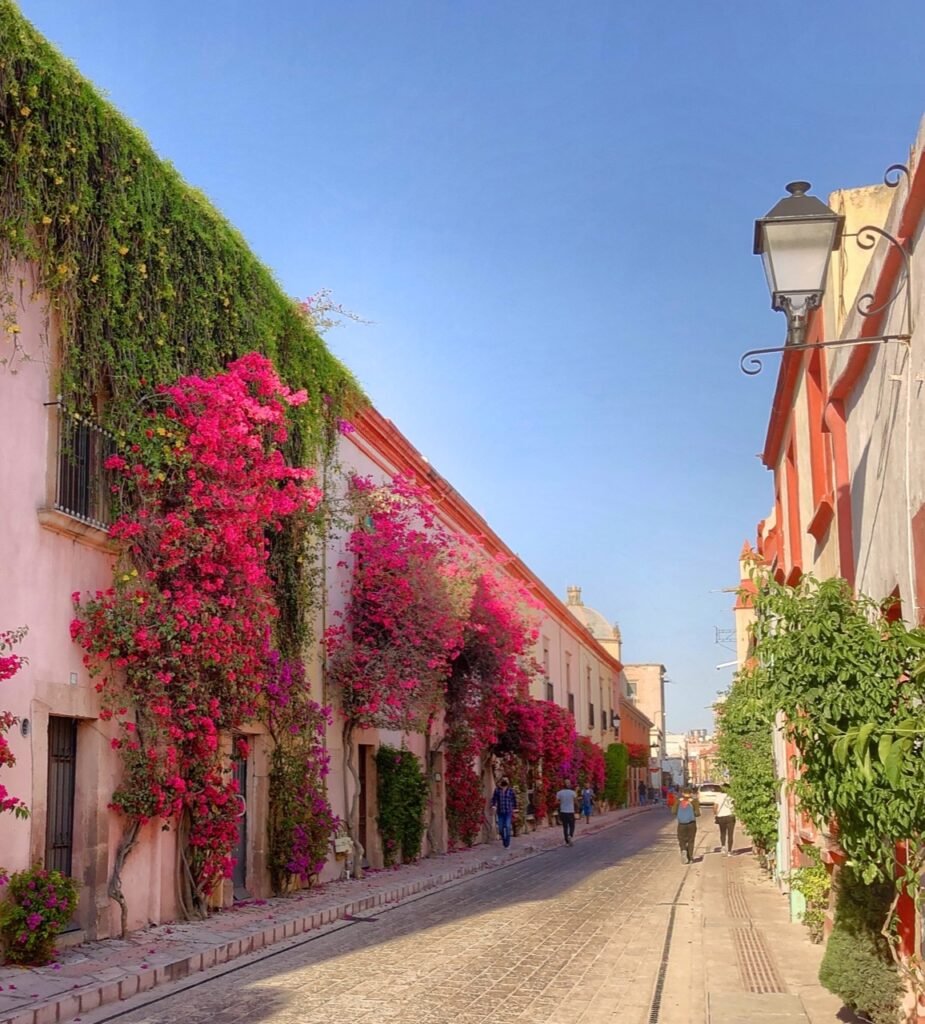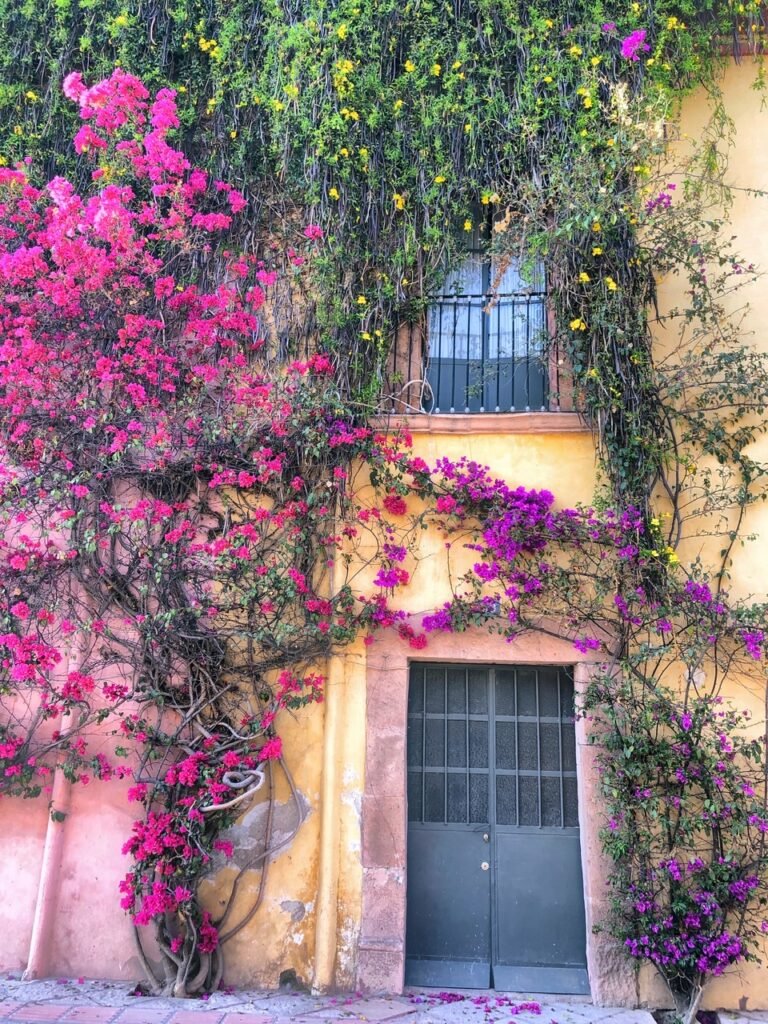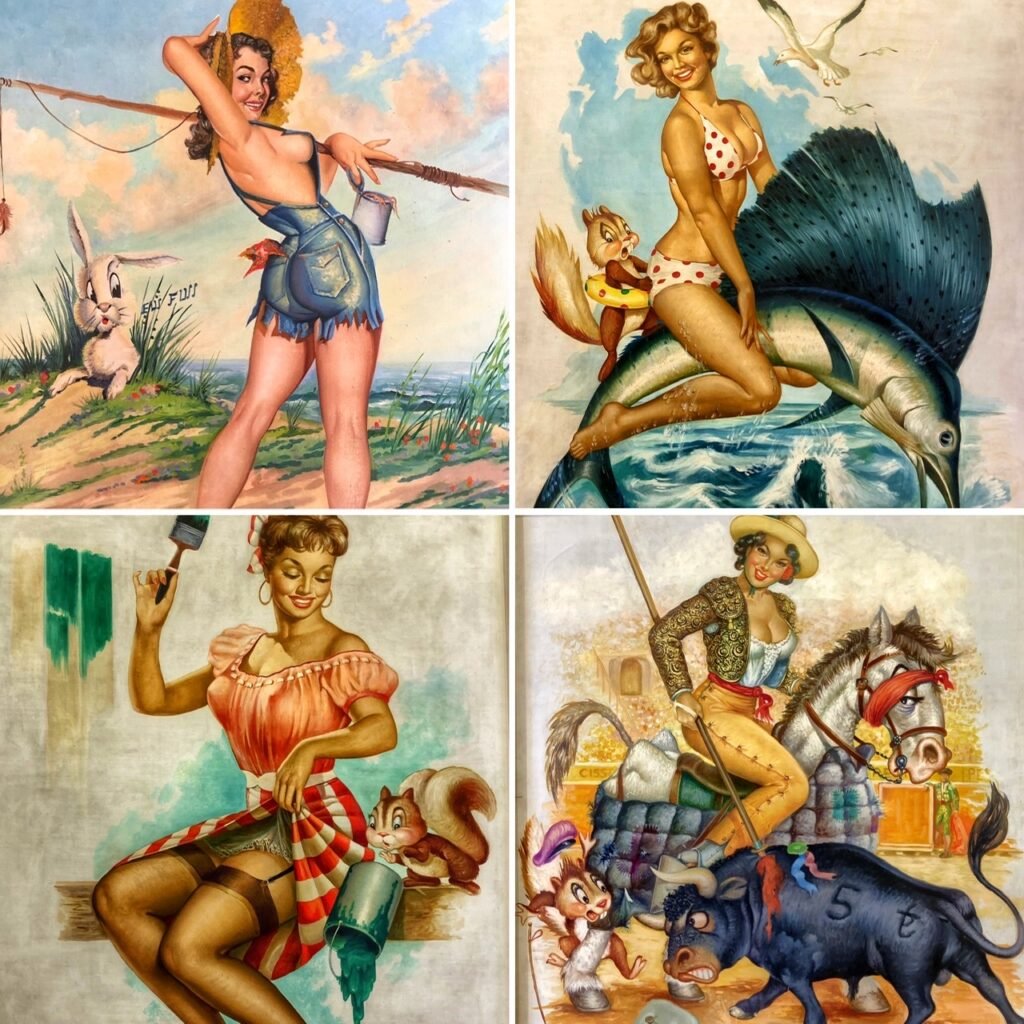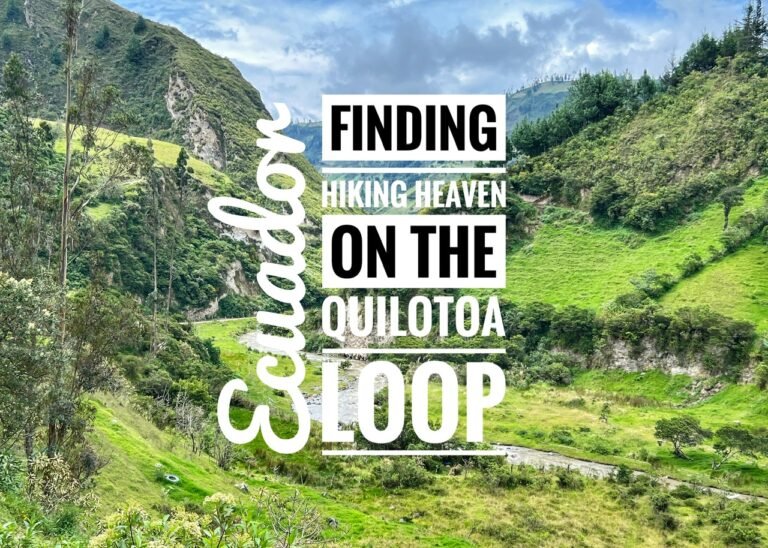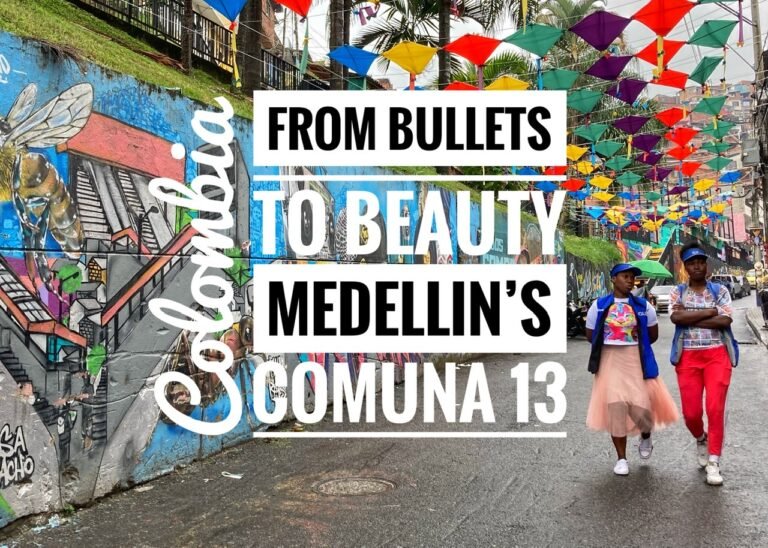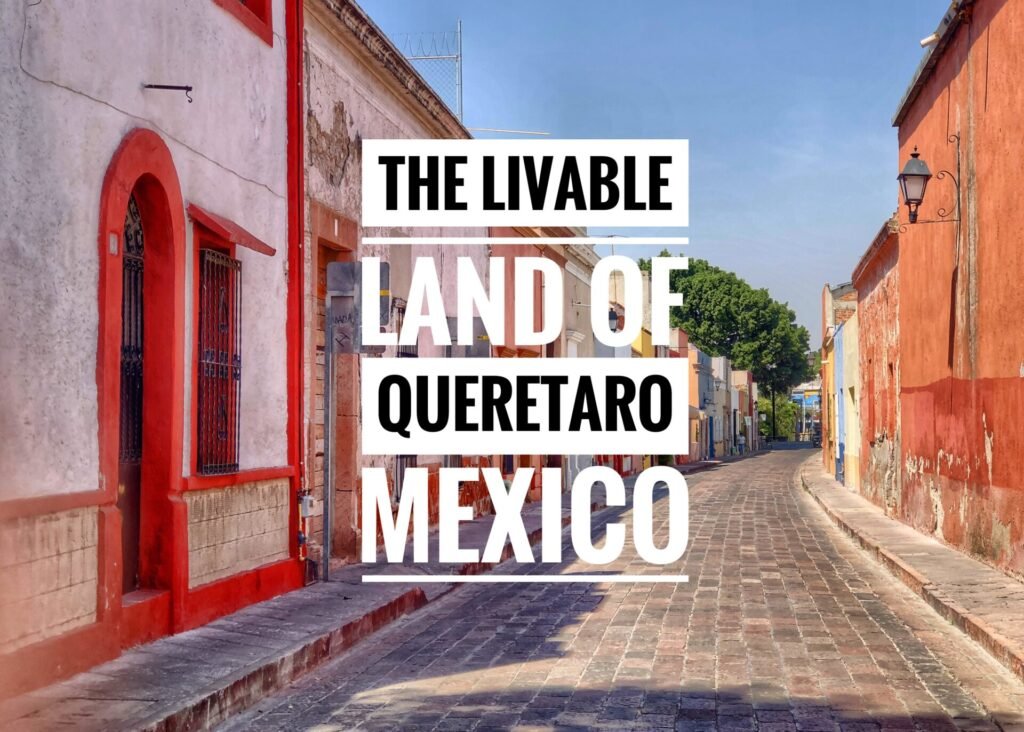
We couldn’t have loved our two weeks in Queretaro (pronounced Kay-ret-ta-row) more. It’s not the most vibrant and rousing city like Guanajuato, the most elegant city like San Miguel de Allende, nor does it have the gorgeous beach like Lo De Marcos. But what it does have, is a feeling of our former Portland, Oregon home and is just…very livable. Bonus points: unlike Portland, it’s very affordable and the sun never stops falling from the sky.
It’s easy to find good breweries, vegan/vegetarian restaurants, green spaces and rustic chic cafes and bars. It’s the capital of one of the strongest economies in all the Mexican states, and also has a remarkably low crime rate.
Of course, we heard in the scrumptious middle of the city where we stayed is a bit different than the sprawling and congested exterior. But in the center, it is flat and walkable, even for the exercise-challenged or when you’re carrying bags of groceries. The internet is strong, everything is clean, (like eat-off-the-streets clean), it’s easy and quick to find the groceries you need, and the restaurant scene is full of affordable and delicious options. In short, it feels like a really good option for digital nomads. We look forward to returning someday.
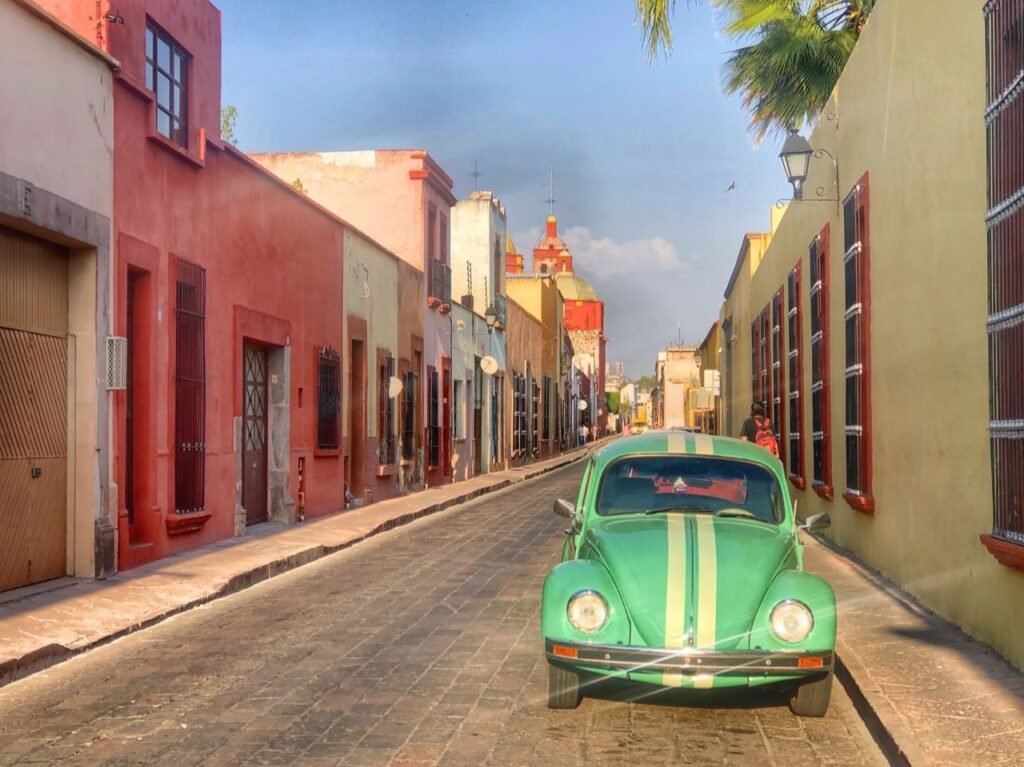
Our neighborhood street in the historic center was very quiet and charming and the colonial look reminds us a lot of Granada, Nicaragua, another city we really love. Although cars are allowed on the side streets, in many areas they’re not allowed to park.
Our first home in Queretaro was a loft called Casa Guerrero. Although it was a bit awkward and dark to stay in, it had a wonderful and hospitable proprietor, a lovely sitting area for working and free laundry! ($400 pesos/night or $20.) Our second apartment was a little more comfortable with a fully equipped kitchen, lots of natural light, and a stellar view….From the shower ? ($475 pesos or $23/night)

Queretaro, a city of just over a million people, represents the “Orgullo de Mexico,” which means “Pride of Mexico.” In addition to being seemingly accepting of everyone, based on several LGBTQ couples we saw, every morning the streets are littered (pun intended) with street sweepers in blue and orange jackets to ensure the motto of the city is upheld.
It’s also the most diligent city we saw in Mexico in terms of COVID practices…only one person per family in stores, city parks and gathering places closed, and of course the standard temperature and sanitizer checks. From what we saw, the city is setting a good standard, making progress, and living up to their motto.

This bookstore, The Crow of Poe, couldn’t look any more Portland if it tried.
The Rio Queretaro runs the length of el centro historico in Queretaro. Although the river itself is unfortunately polluted, the city has done a great job with biking and walking paths on either sides, and keeping it free of litter.
You can even rent bikes through the bikeshare program for just $5 pesosa use! ($.25) We enjoyed walking along it due to the overflowing gorgeous jacaranda trees, the variety of businesses and things to see along its edge, as well as the diverse and interesting bridges.
In fact, every bridge was different!
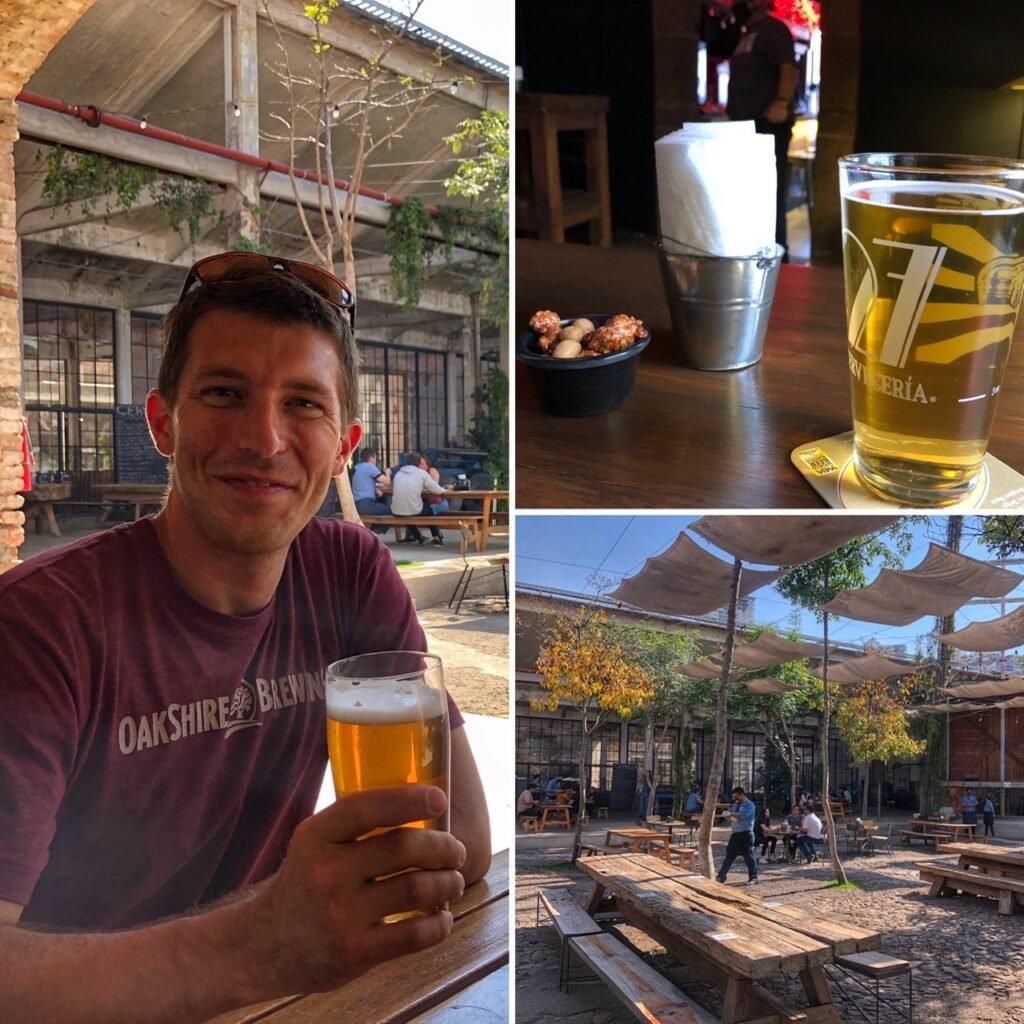
So, truth be told, when we were researching places in which to open a nano-brewery and live, Queretaro was our number one choice in Mexico. Greg would have had some exceptional competition, as craft beer seems to be catching on quickly here! While there, we checked out 27 Cervecería and Cervecería Hércules, which was a very worthwhile jaunt out of the center. Both had excellent beers and Hércules even boasted a complete factory and relaxing beer garden, which reminded us of many McMenamin’s establishments in Oregon. A pint is about $80 pesos ($4).

They even recycle in Queretaro, which we’ve hardly seen anywhere in Mexico. (Okay, it’s not commonplace in Queretaro, but there’s still the very visible possibility that they’re thinking about it!)
Another huge bonus for Mandy? Any vegan or vegetarian will be very content here. There are multiple options just for them throughout the city. At Poderosa, was the first time Mandy indulged in El Pastor and Chorizo tacos and they were AMAZING! And still affordable. Three tacos were $50 pesos ($2.35.) Greg’s burger and fries were $70. ($3.50). Another we loved was the falafelria called Veggie Happy, in addition to VegCo. Cocina Vegana which had this amazing four course lunch fat left or $80 pesos ($4.) It included vegan fajitas, tortilla soup, a salad, jamaica juice and fruit.
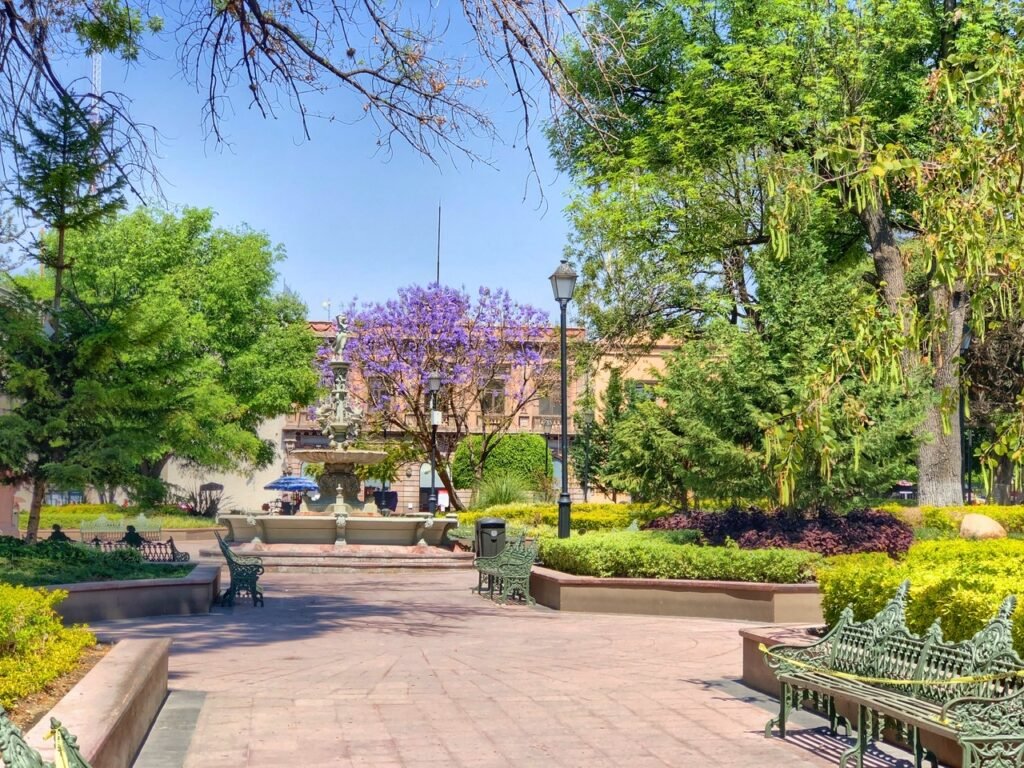
Jardin Zenea, one of many serene parks. Sadly, although they are beautiful, most of them are roped off due to Covid so we really don’t feel like we’re getting to take full advantage.
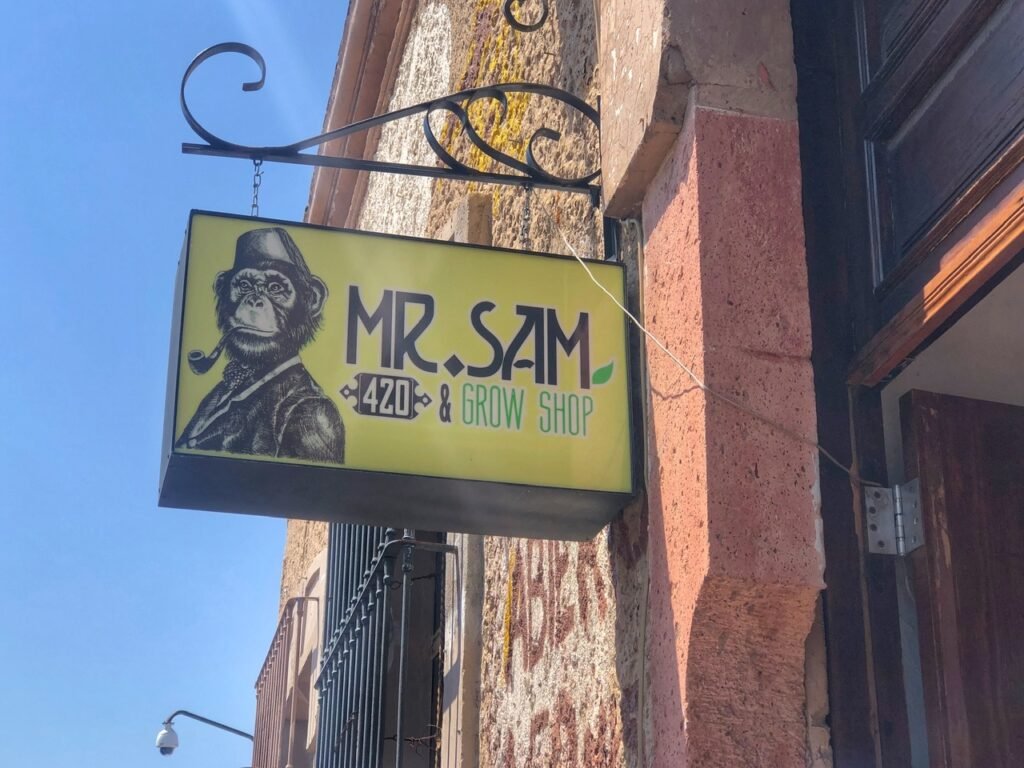
More signs of Portland ? Based on where we are, pretty sure they don’t offer the same selection.
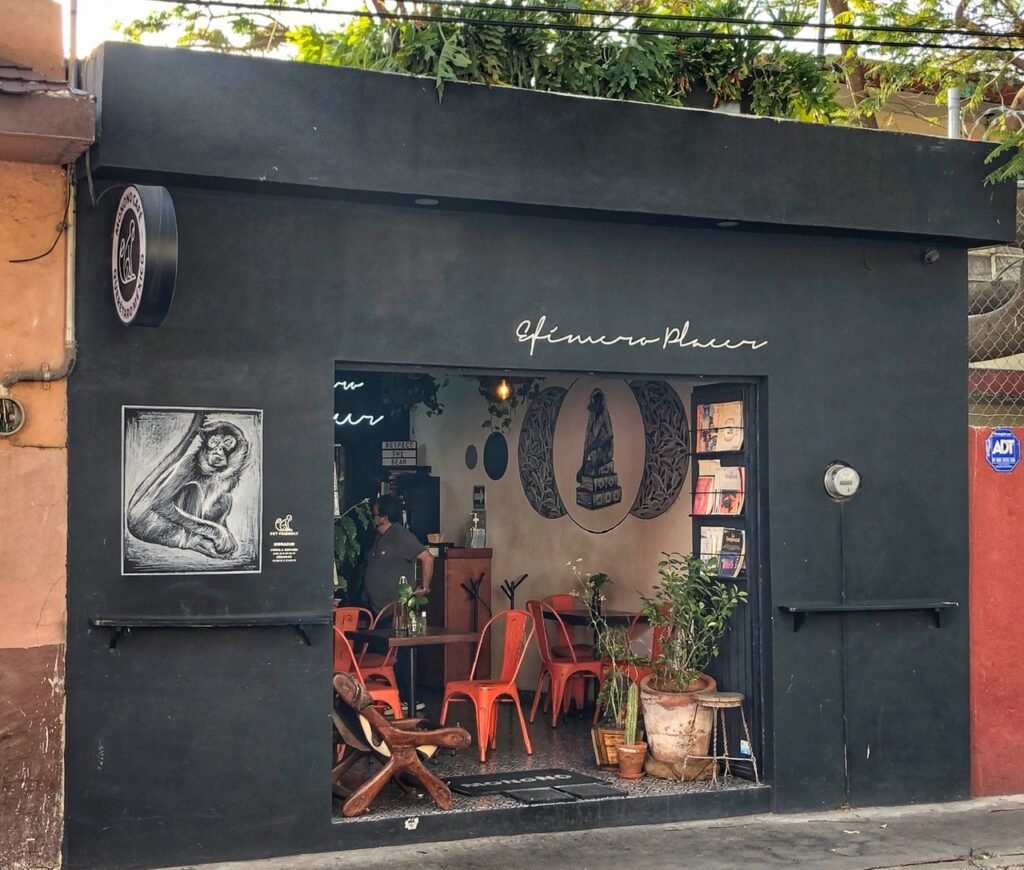
The Monono Cafe, oozing with hipster chic.
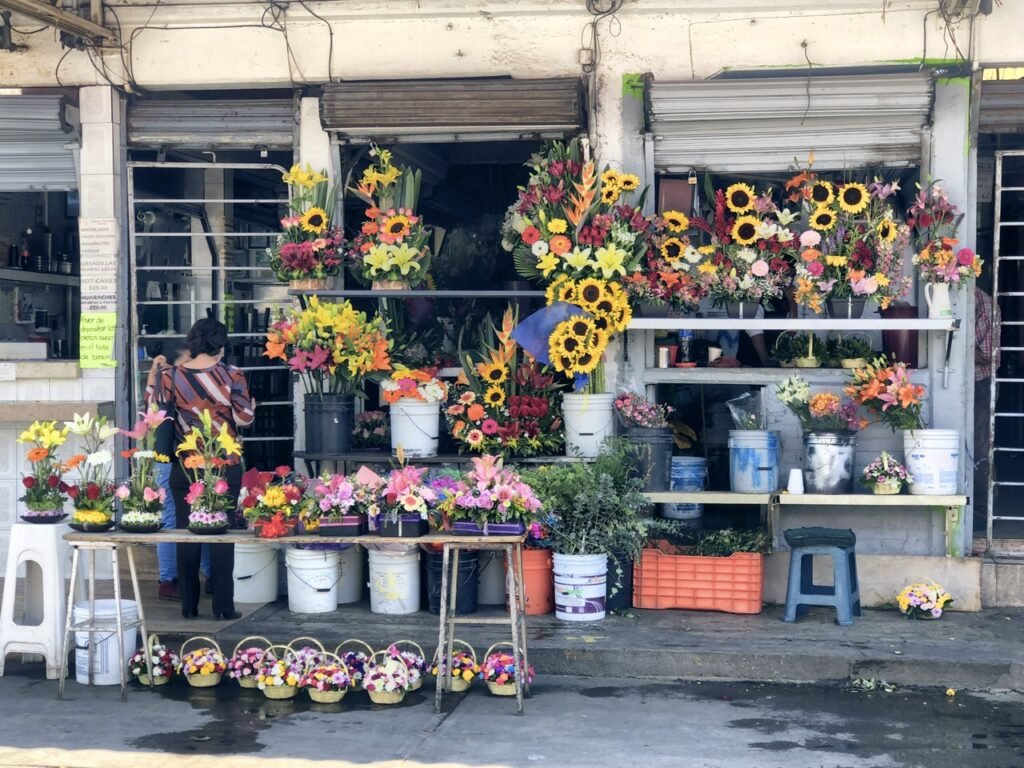
A flower seller outside of el Mercado de la Cruz, which probably had the best variety of any market we’ve come across yet.

Not to mention, everyone was extraordinarily friendly to us there, so it was an ideal place to practice our Spanish. Some of them also wanted to exchange and try out their English skills.
The displays and selection were really well done, and the antojitos (Mexican street food) selection was also through the roof. (By the way, antojitos translates to “little cravings! What a fabulous name.) On this particular day, we settled on good ‘ol tacos. Mandy had the nopales (cactus) with avocado, which has grown to be one of her favorites…
At right, a local specialty, Enchiladas Queretanas. These are enchiladas with salsa verde, filled with chicken, potatoes and carrots. The filling with potatoes and carrots distinguishes the enchiladas queretanas from the enchiladas from other regions of Mexico. It also tasted ultra creamy to us.

Stopping at the tortilleria to pick up our weekly staple of frijoles (beans). Believe it or not, we’ve been putting them in our morning smoothies and it’s amazing how much creaminess (and obviously protein) they can add. Before we discovered them at the tortilleria, we were actually going through the time-laden and annoying process of cooking dry beans until we realized these are the best, least salty and cheapest bean options available! They also sell really good salsa, rice and of course, tortillas.

Una nina pequena pausing for a delicious drink.
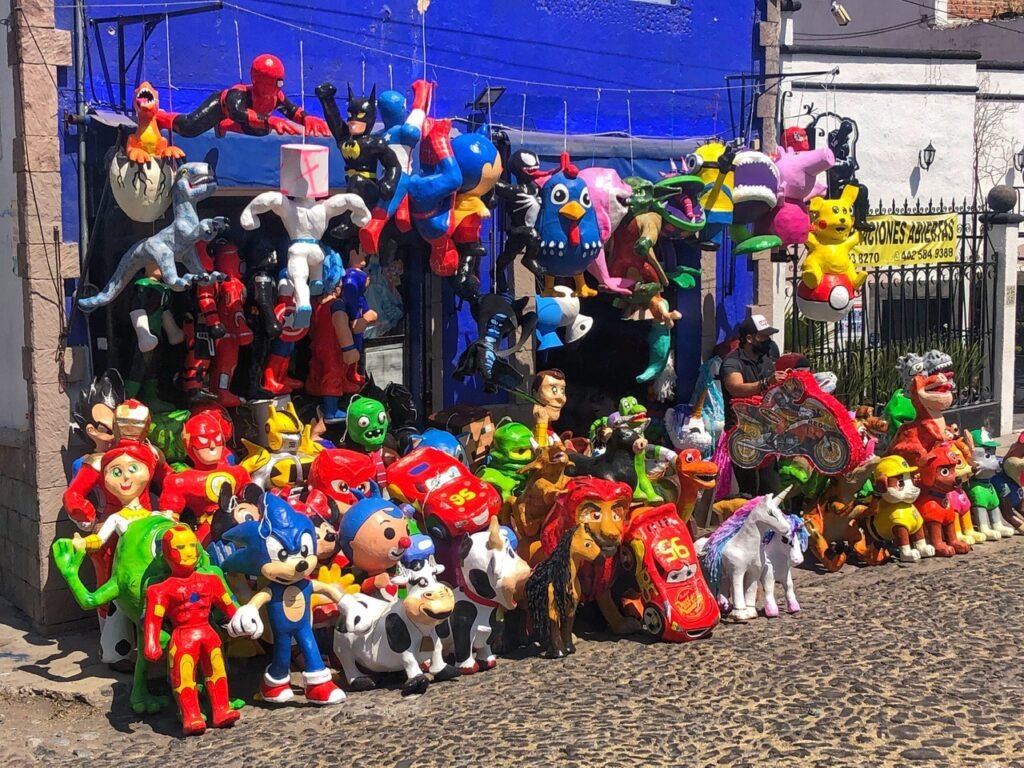
Some of the coolest piñata options! The piñata originated in China and thanks to the famous traveler Marco Polo it became known in Europe. Later the Spanish missionaries brought it to America giving it a religious meaning, representing satan as a sphere with seven spikes that symbolize the seven deadly sins and the sweets inside represent temptations, wealth and earthly pleasures. Now, as they’re used in the States, they’re mostly just for good fun!

One of the beautiful walkways. Can’t get over the brickwork in the domes.

Love the contrasts in this photo.

One the things we love most about Mexico is the gorgeous plazas and parks. Jardin Zenea, is one those of many serene areas in Queretaro. Apparently when Covid is not a thing, (ha!) they have large groups dancing in the park on Sunday evenings.
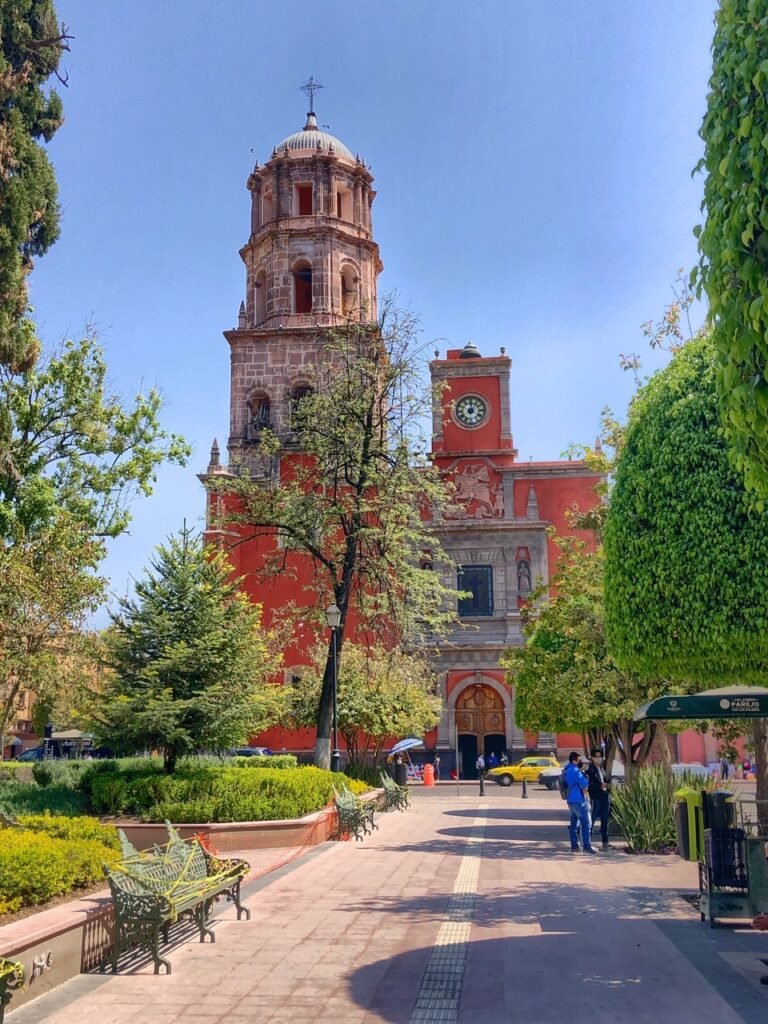
El Templo de San Francisco. It functioned as the Cathedral of Querétaro between the years of 1865 and 1922. And don’t you dare sit in those benches!

Disappointingly, street art is not nearly as abundant in Queretaro as in other Mexican cities. However, we found this one eye-catchingly bizarre.

Teeny, irresistible clothes for christenings and other events.
Mandy wags her tail disparagingly outside another closed park. We understand a lot of COVID regulations, but this one was quite a bummer 🙁 At right, Jardín Guerrero. Also roped off. They turn this area into an ice skating rink during the holidays.
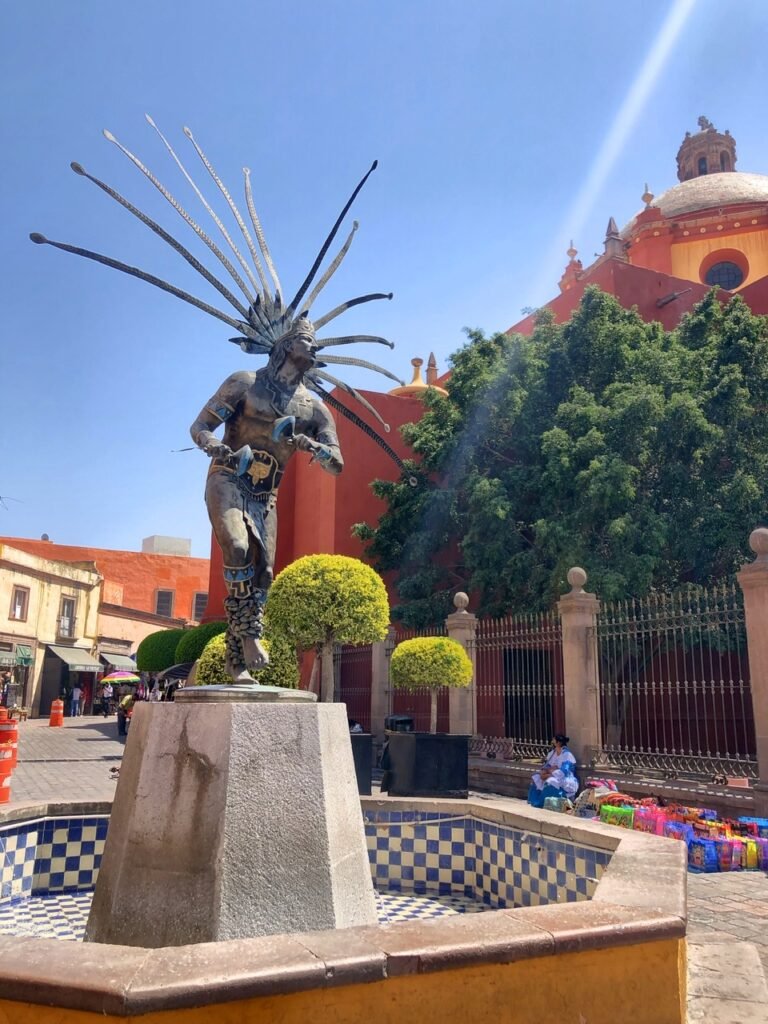
El Danzante Conchero Chichimeca…where Querétaro and its people pay homage to the Chichimecas, one of the ruling tribes of this region before being conquered by the Aztecs in the mid-13th Century.
One of the more touristy and buzzing shopping streets of the city, Calle de Cinco de Mayo. Lots of things to buy and eat! This kid even drives his car down this pedestrian street trying to get attention!
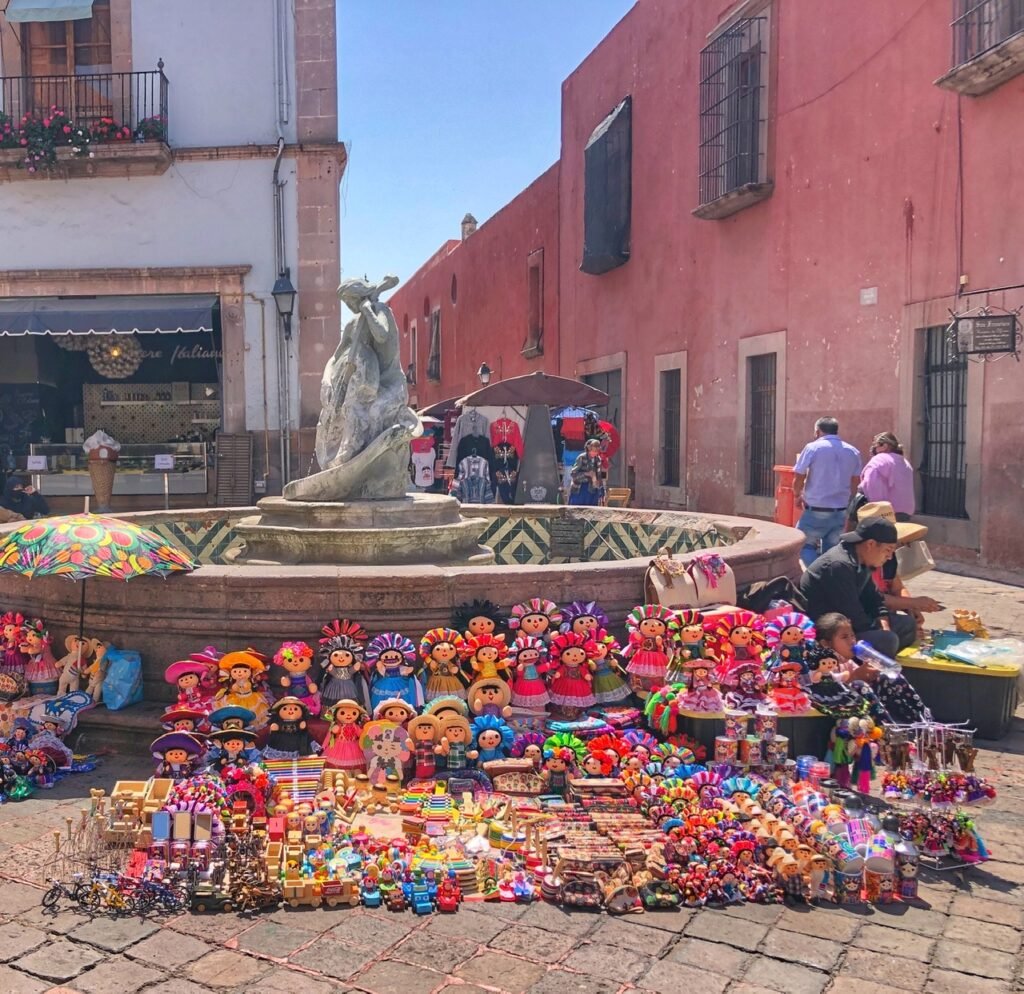
It’s very common to see hundreds of colorful Mexican Rag Dolls, or “Marias” as they’re called in Queretaro, for sale on this street. Most of these dolls are made by the Otomí indians living in Amealco, Querétaro. These dolls, typically purchased by tourists, are made by hand and the process to create one single doll can take up to five hours. Many years ago, the doll was made using clay and it was believed it protected children against evil spirits. Now, María has become one of the most representative Mexican toys and you can find an infinite number of rag dolls who represent the way indigenous women dress; with their black hair braided with bright colored ribbons, their embroidered blouses, and their unmistakable skirts full of colors and life. Also, their skin tones have had a recent makeover and now offer more options, just like the Mexican people. (Wikipedia)
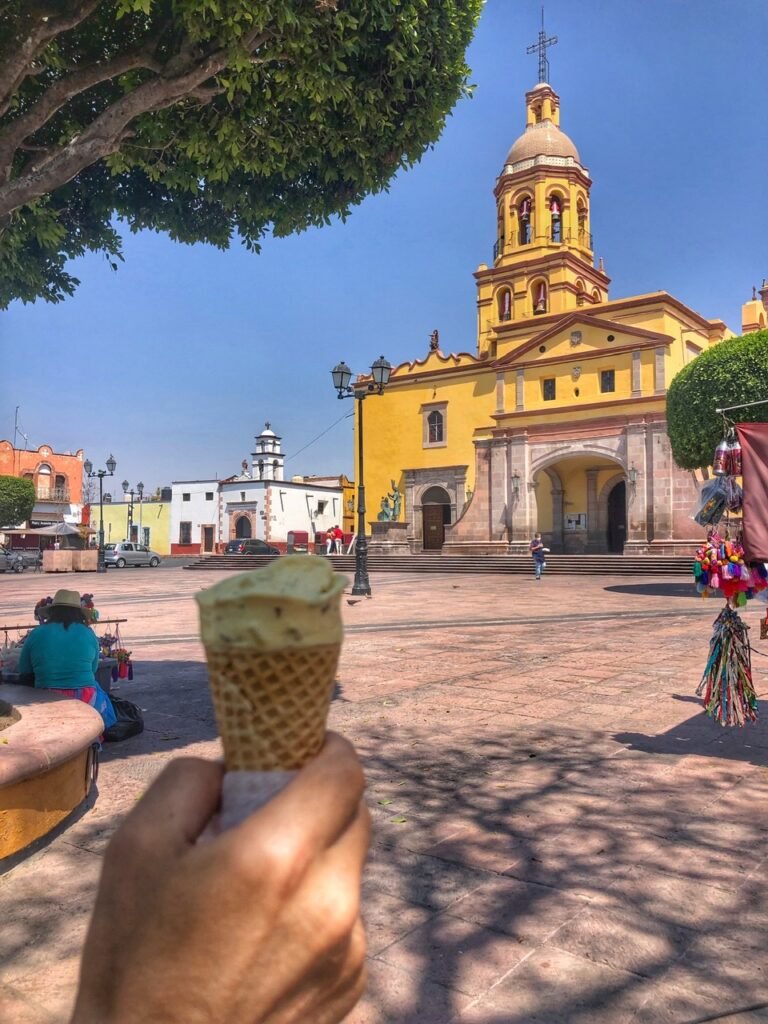
We read that we had to try “mantecado” ice cream while in Queretaro. We did and, it was muy dulce and simply amazing. However, we still couldn’t identify exactly everything that was in it. Definitely raisins, maybe cinnamon or nutmeg, and some yellow dried fruit which obviously dyed the ice cream yellow, but didn’t taste like pineapple. We were still a bit mystified as we enjoyed it in front of Templo y Convento de la Santa Cruz.
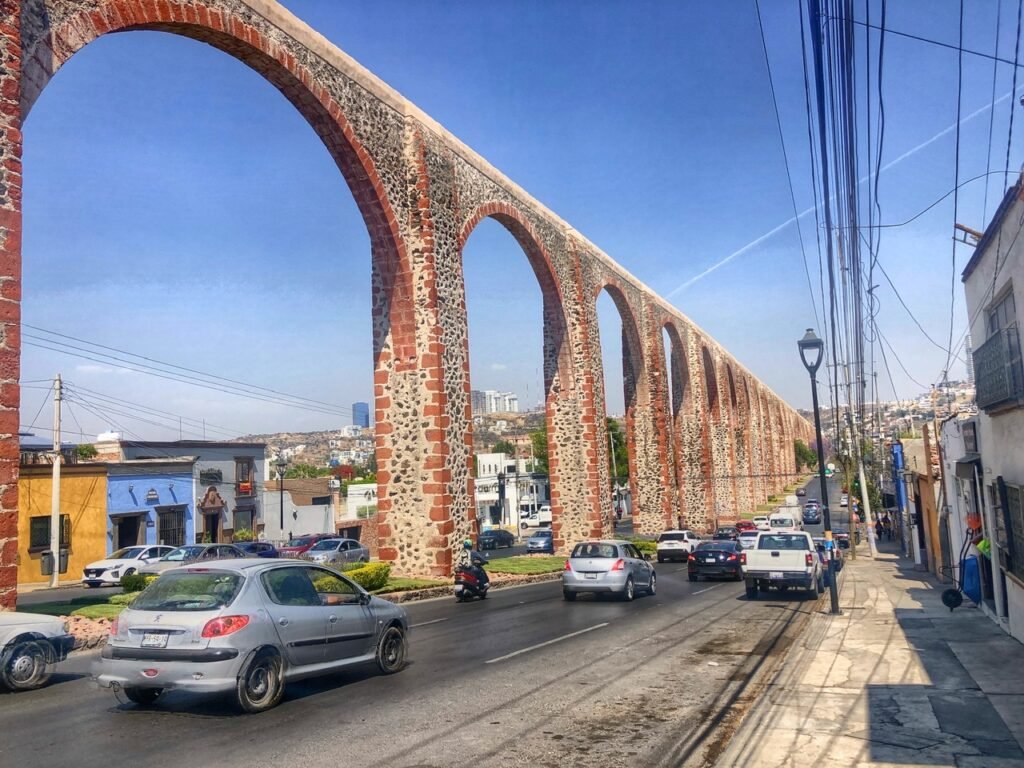
You might also be a bit mystified to see a giant Roman aqueduct in the middle of a Mexican city. In 1736, the aqueduct at Santiago de Querétaro was completed. At 23 meters (75 feet) tall and 1280 meters (4200 feet) long, it remains an impressive feat of civil engineering. The aqueduct was designed to carry water to the city from nearby springs. Nowadays, the aqueduct no longer carries water, but is a distinct heritage and tourist attraction of Querétaro.
Another view of the aqueduct framed superbly by a bursting lavender jacaranda tree. Jacarandas are native to regions of Latin America and the Caribbean. The underbelly of the aqueduct is just as interesting as the top, as it is lined with whimsical sculptures like “Mama Elefante.” We found it well worth it to walk along the length of the aqueduct to fully appreciate it.
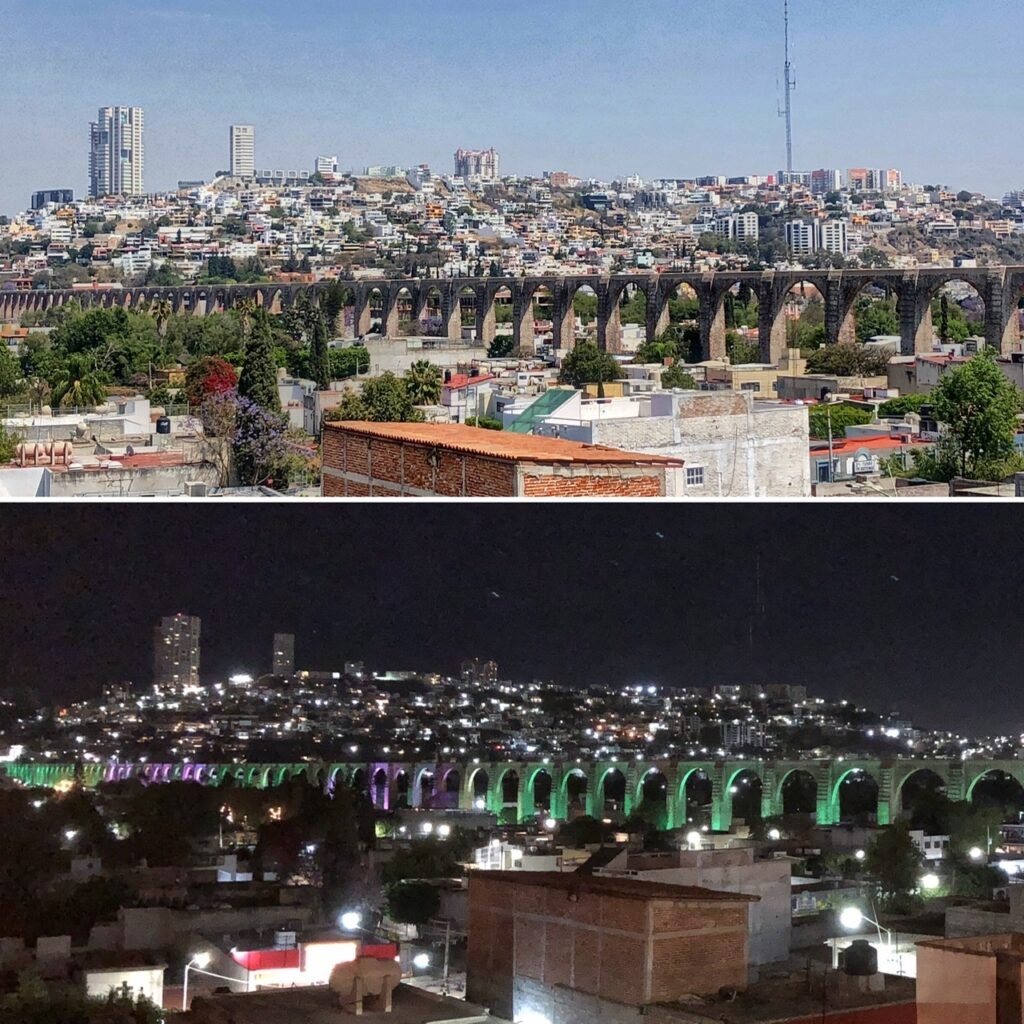
The day and nighttime views of the aqueduct taken from the Mirador of the Arcs.
Jardin de Los Platitos is a small art park entirely made of mosaics. Very lovely and supposedly good hot dogs, although we didn’t test them out. A man sits quietly on one of the mosaic benches.
Although color wasn’t quite as widespread as in Guanajuato, when you really looked for it, it popped up in surprising ways!

The breakfast burritos at Cafe Narif were so tasty, particularly the shrimp. ($58 pesos or $2.80.) Coffee drinks started at $35 pesos or $1.50)

The 18th Century Templo de Santa Rosa de Viterbo, one of the most compelling and grand baroque churches in Queretaro. We found the faces very intriguing.

The Old Railway Station was inaugurated in 1904, connected Querétaro to the Central Mexican Railway, built at the end of the 19th century, and with the National Railway, established at the start of the 20th century. The Federal Government acquired both railway services and, in 1909, joined them under the name National Railways of Mexico. This building is inspired by the English Neo-Renaissance style.
So much bougainvillea. <Sigh>
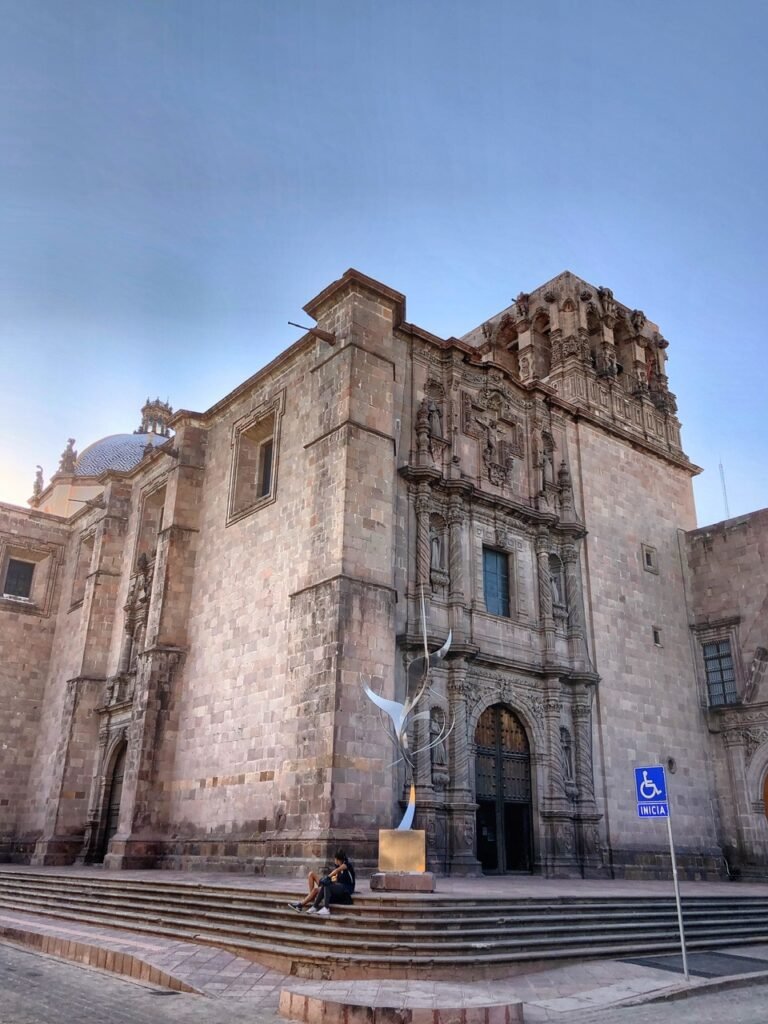
Templo de San Agustin from 1745 was also an ex-convent.

Templo de San Francisco, a different view. Notice in this photo how women have started making their mark on the city. While we were here, there were mass demonstrations on International Women’s Day both in Queretaro and in Ciudad de Mexico.

Another reason we loved Queretaro is we have built in friends!! Alex and Riley, our former neighbors in Portland, have happened to live here since September. We had a wonderful time hanging out with them and letting them introduce us to their city.
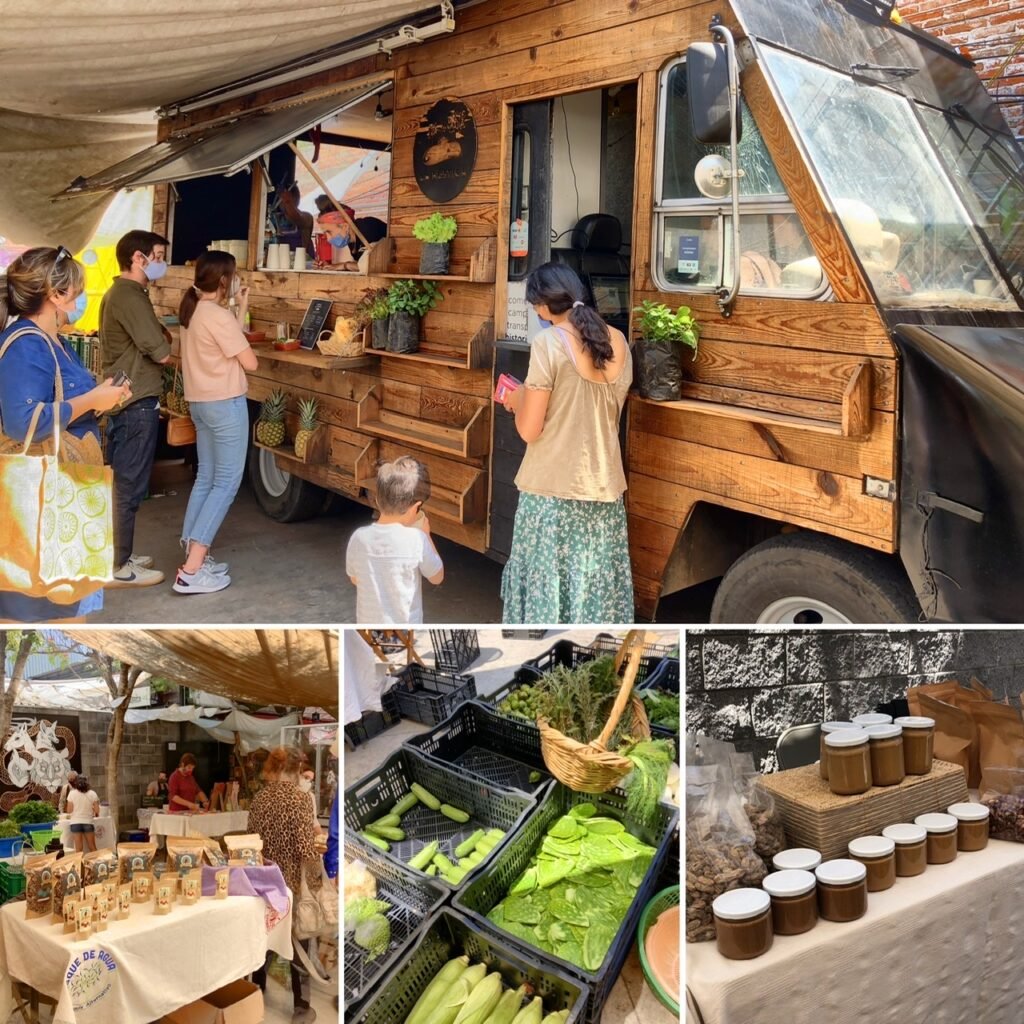
They even took us to the Tianguis Bosque de Agua Querétaro (weekly farmer’s market). Going here felt like we’d pretty much been dropped right back into Portland with its rustica food truck and artisanal food selection.

La Plaza de la Independencia or Plaza de Armas is the main square of the City of Querétaro. On its north side is the State Government Palace. The rest is surrounded by renowned restaurants and mansions from the 18th century. As with most public spaces, it was roped off.
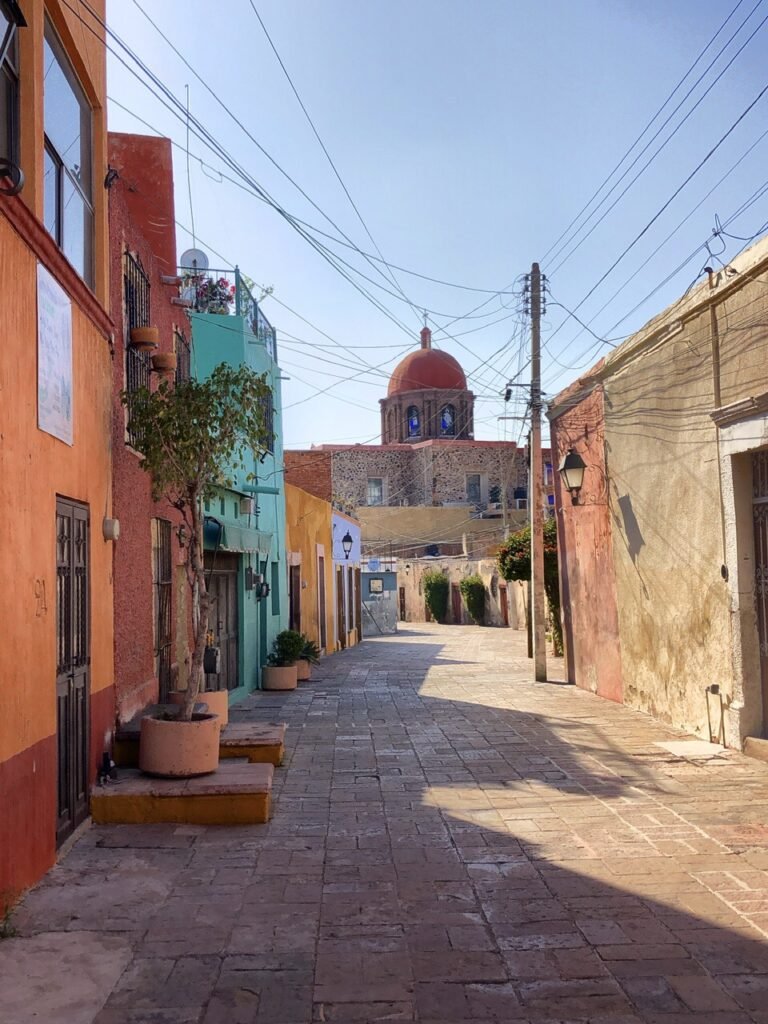
The street where we lived and the church dome we could see when washing our nethers.

We love visiting museums everywhere we go, and as far as we’re concerned, the quirkier, the better. Within a 17th century mansion in Queretaro happens to live the world’s first museum of its kind…el Museo del Calendario (calendar museum).
It featured nostalgic calendars from the 19th Century to present day, including lots of “steamy” art from pin-up girl calendars of the ‘50s, as well as a massive replica of el Piedra del Sol, an Aztec calendar carved into a massive chunk of cedar wood. It also has a complete history of calendars from the Egyptians, Chinese, Hindus, Persian, and Roman (Gregorian). It’s kinda fascinating to think about how many the world has been through.
Unfortunately it was all written in Spanish so we got a little impatient with our skills after awhile…haha. ($40 pesos or $2/ticket.) There is even a room which showcases a calendar from every single year of the 20th Century. The one above from 1953 couldn’t help catching our eye ?

There are several rooms dedicated to the artwork the graced the pages of Mexican calendars. Humor takes over in this image, showing the moment when a little girl brings her doll in to be baptized.
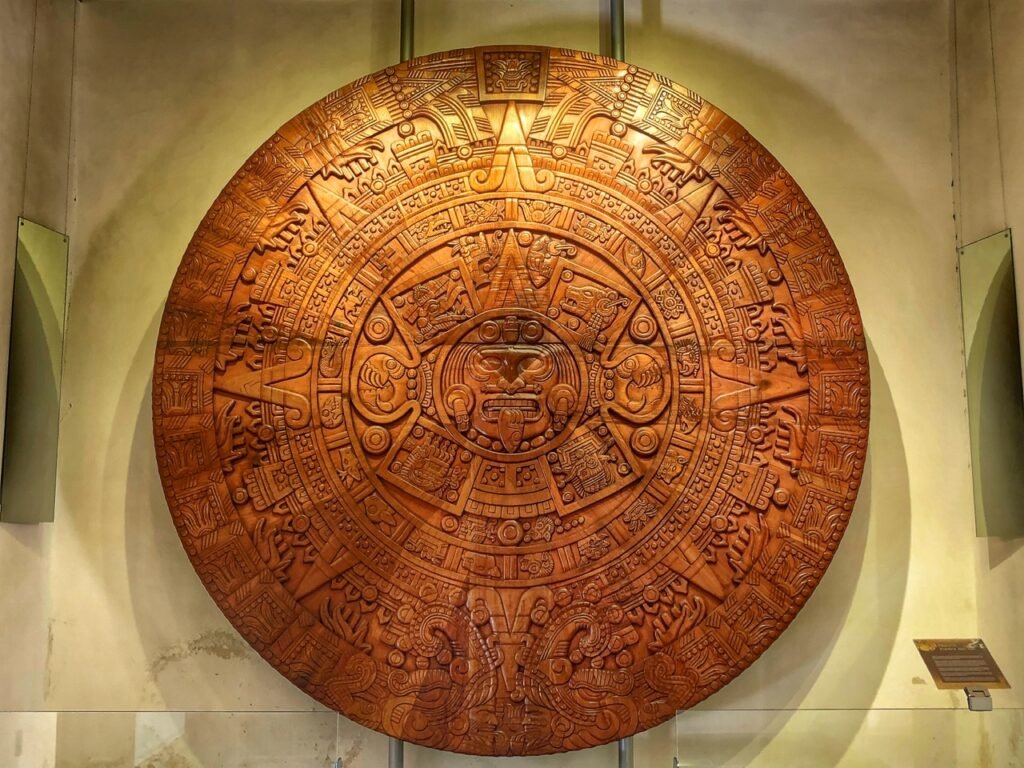
The Piedra de Sol (Aztec Sunstone) is a 600-kilogram replica of the late post-classic Mexica sculpture housed in in the National Anthropology Museum in Mexico City. Since, at the time, we believed the museums were still closed in Mexico City (?), we were glad we got to see something here. Shortly after the Spanish Conquest, this monolithic sculpture was buried in the Zocalo, the main square in Mexico City and was rediscovered in 1790 during repairs on the cathedral. Following its rediscovery, the sun stone was mounted on an exterior wall of the cathedral, where it remained until 1885. Modern research suggests that it was carved some time between 1502 and 1521 and there are no clear indications about the authorship or purpose of the monolith. (Wikipedia)
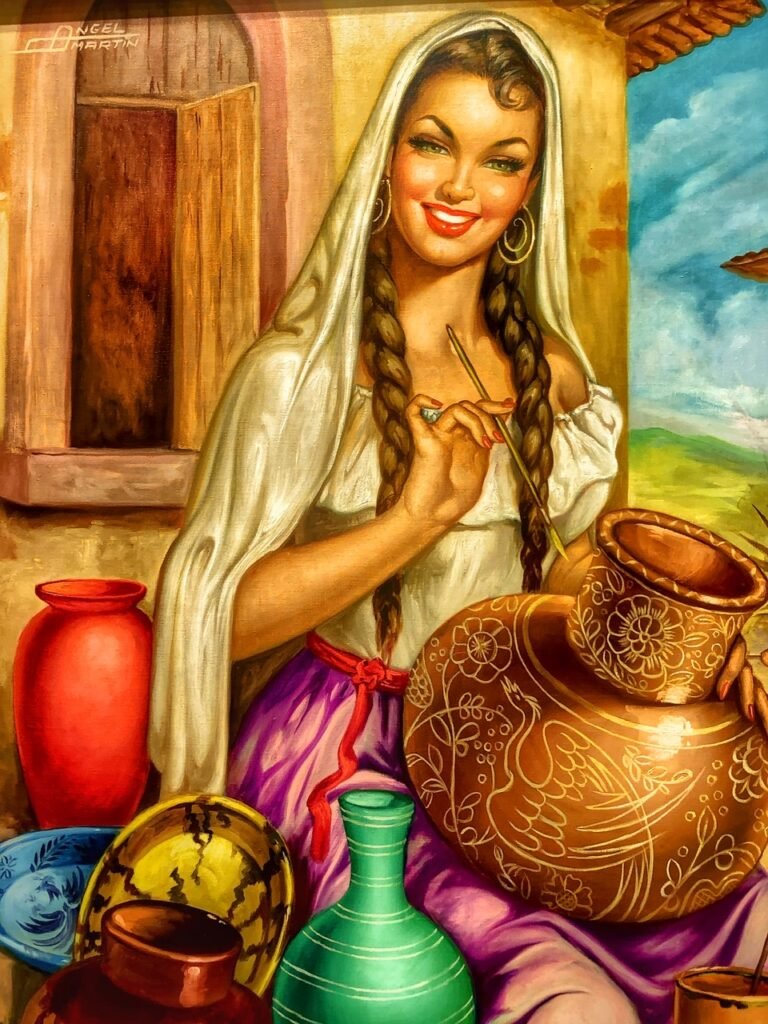
A very classy lady painting pottery.
And, perhaps some slightly less classy ladies, and her mischievous forest friends. These pin-up girls were painted by Ferrari in the 50s. Greg sneaks a peek when he thinks Mandy isn’t watching.
Just love these images. So vibrant! Rooms and rooms full of calendar images. We appreciated the English translations on these very much.

History of 20th century calendars.

The original 17th century floor of the mansion!
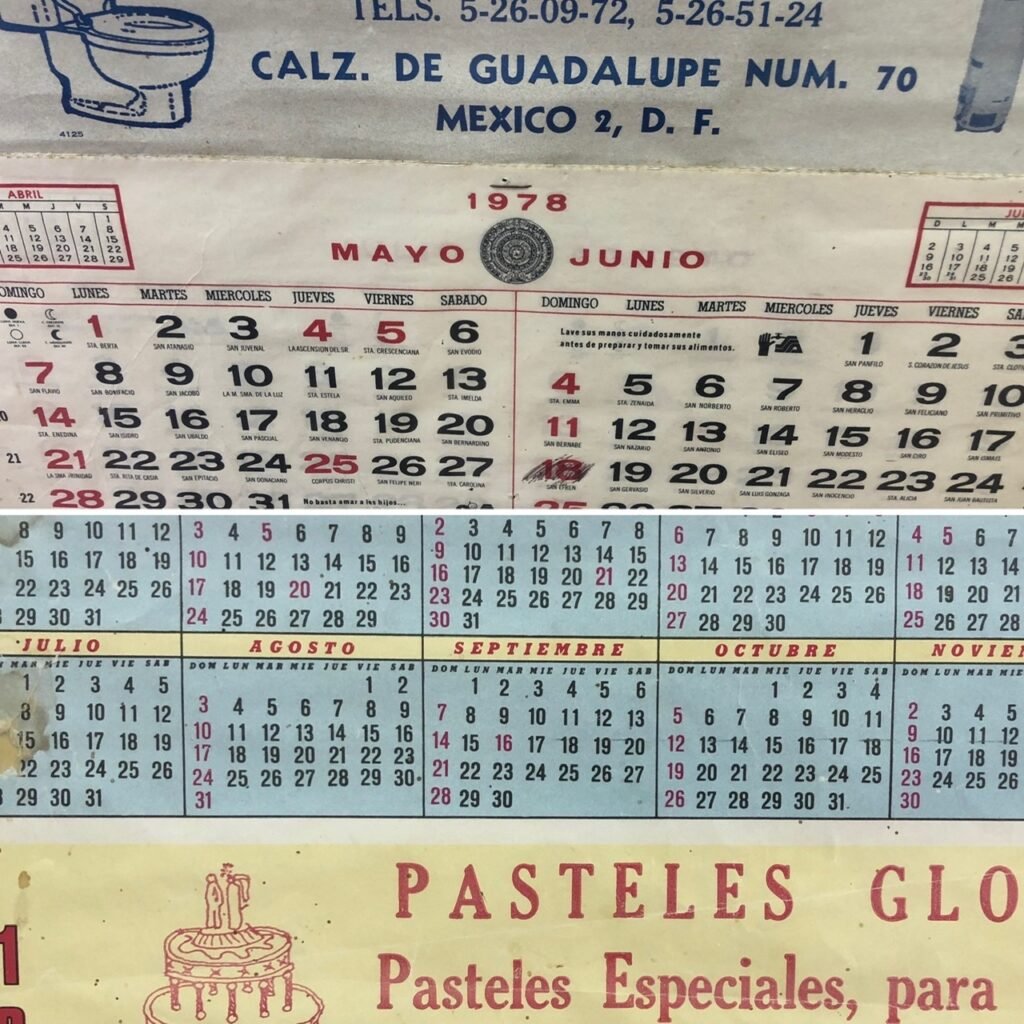
Finding our birthdays! August 9, 1980 (Mandy was a Saturday baby because clearly she knows how to party) and May 11, 1978 (Greg was a Thursday baby because he’d rather stay home ?)
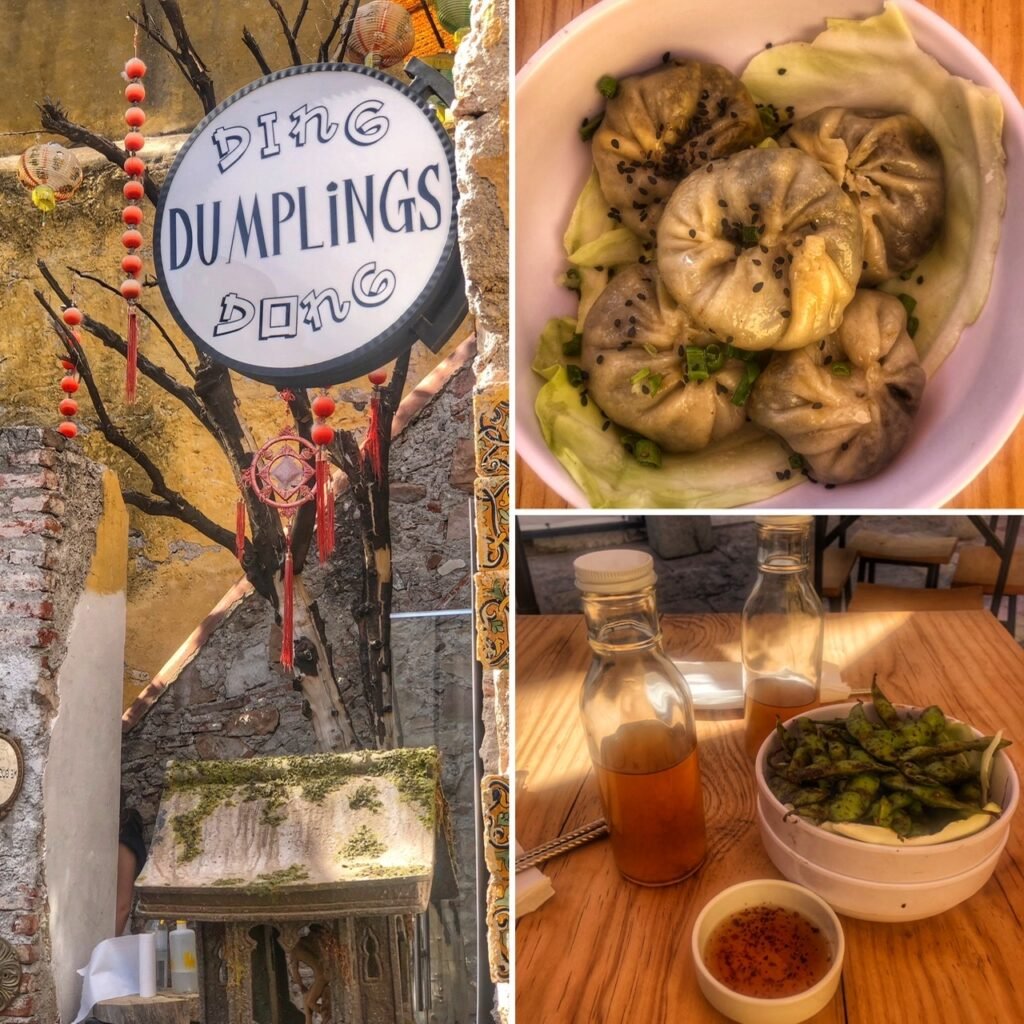
For one of our last meals in Queretaro, we decided to indulge in a little Asian treat at Ding Dong Dumplings. Let’s be honest…we couldn’t resist the name. We met the owner, who was really kind, as he sweetly adjusted and readjusted the umbrellas way more than necessary, to make sure we were in the shade. Then, we had vegetable dumplings, tea and spiced edamame. It was absolutely delicious for a change and well worth the splurge. ($275 pesos or $13.) At this meal, we discussed how we could definitely come back to Queretaro and spend a lot more time.

